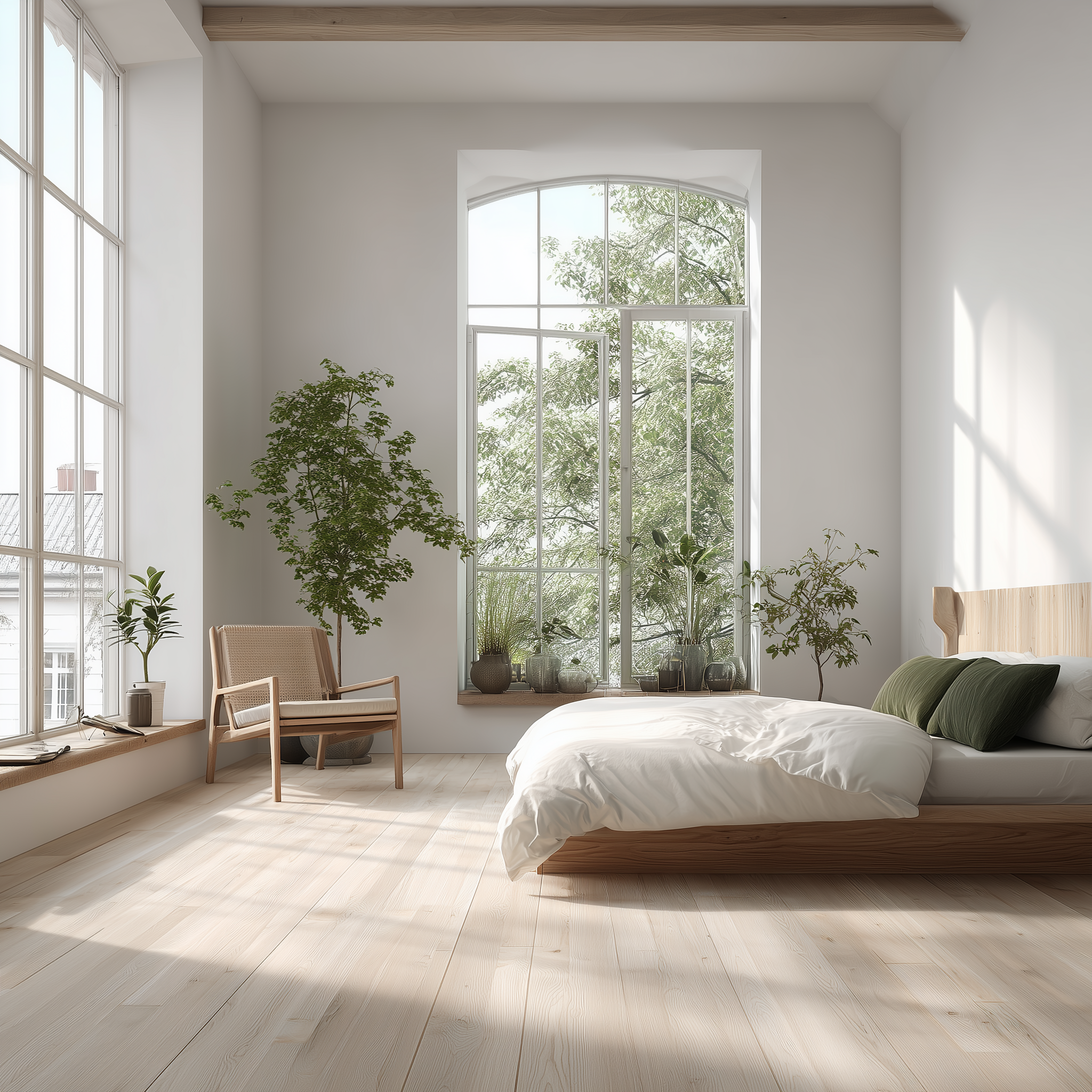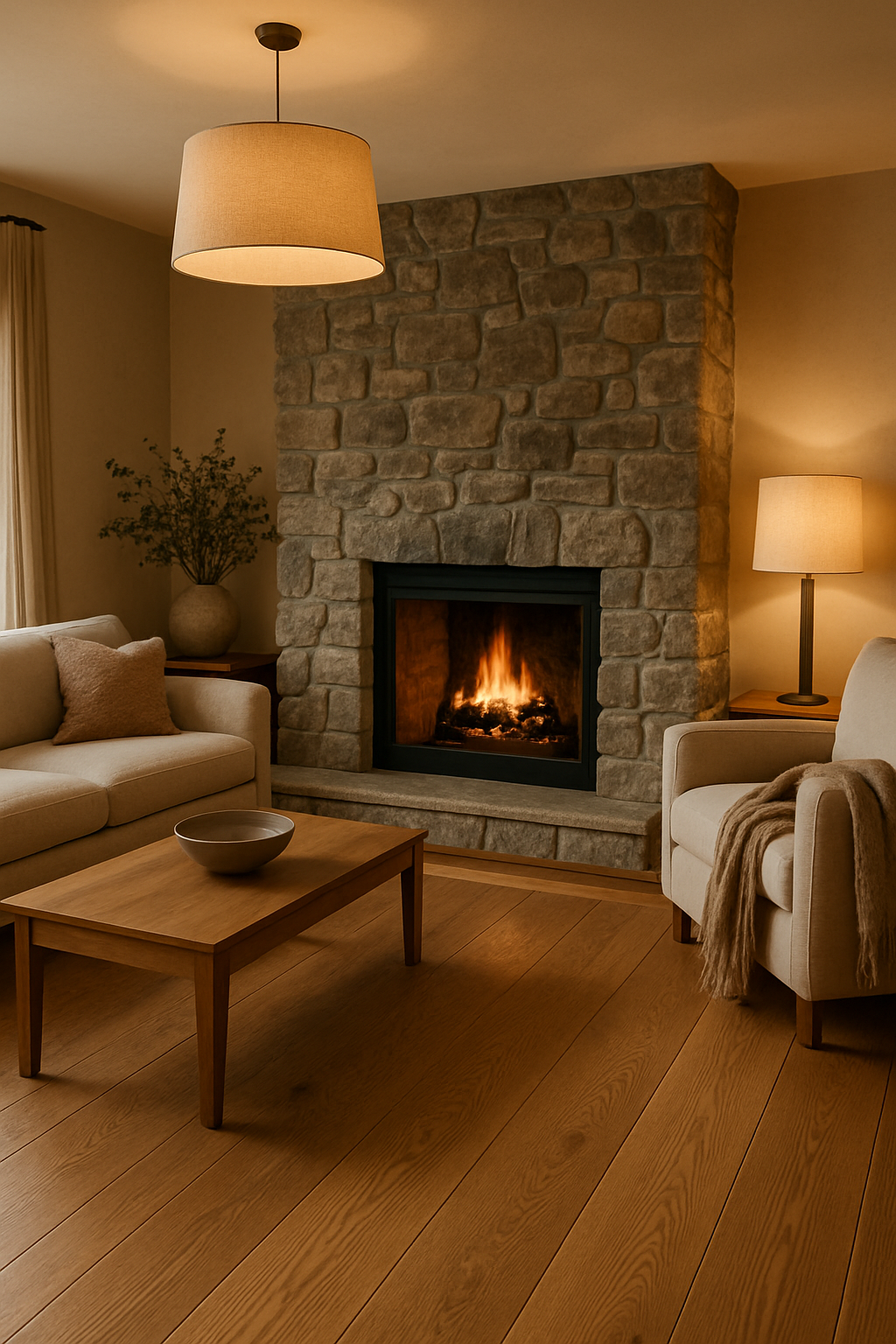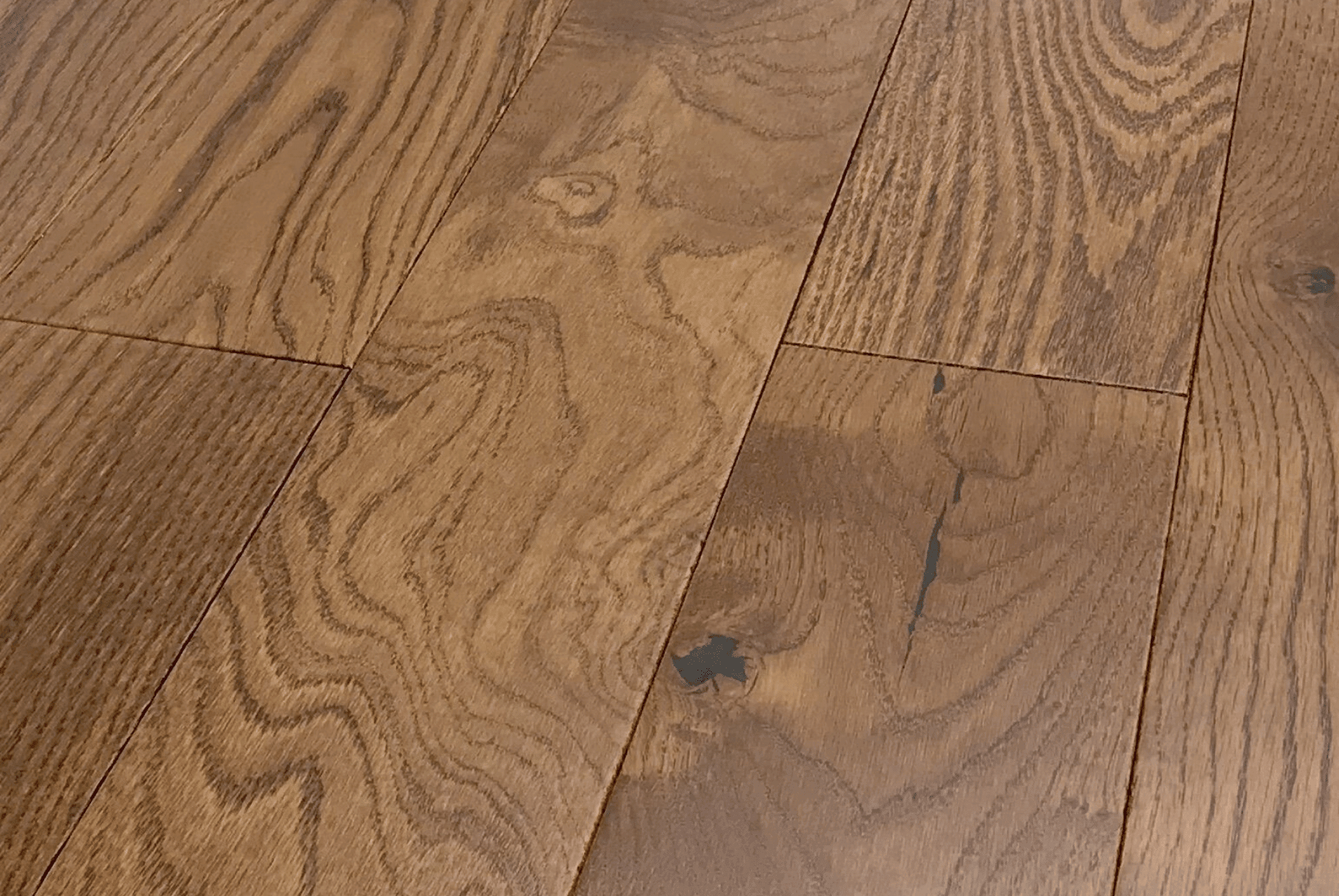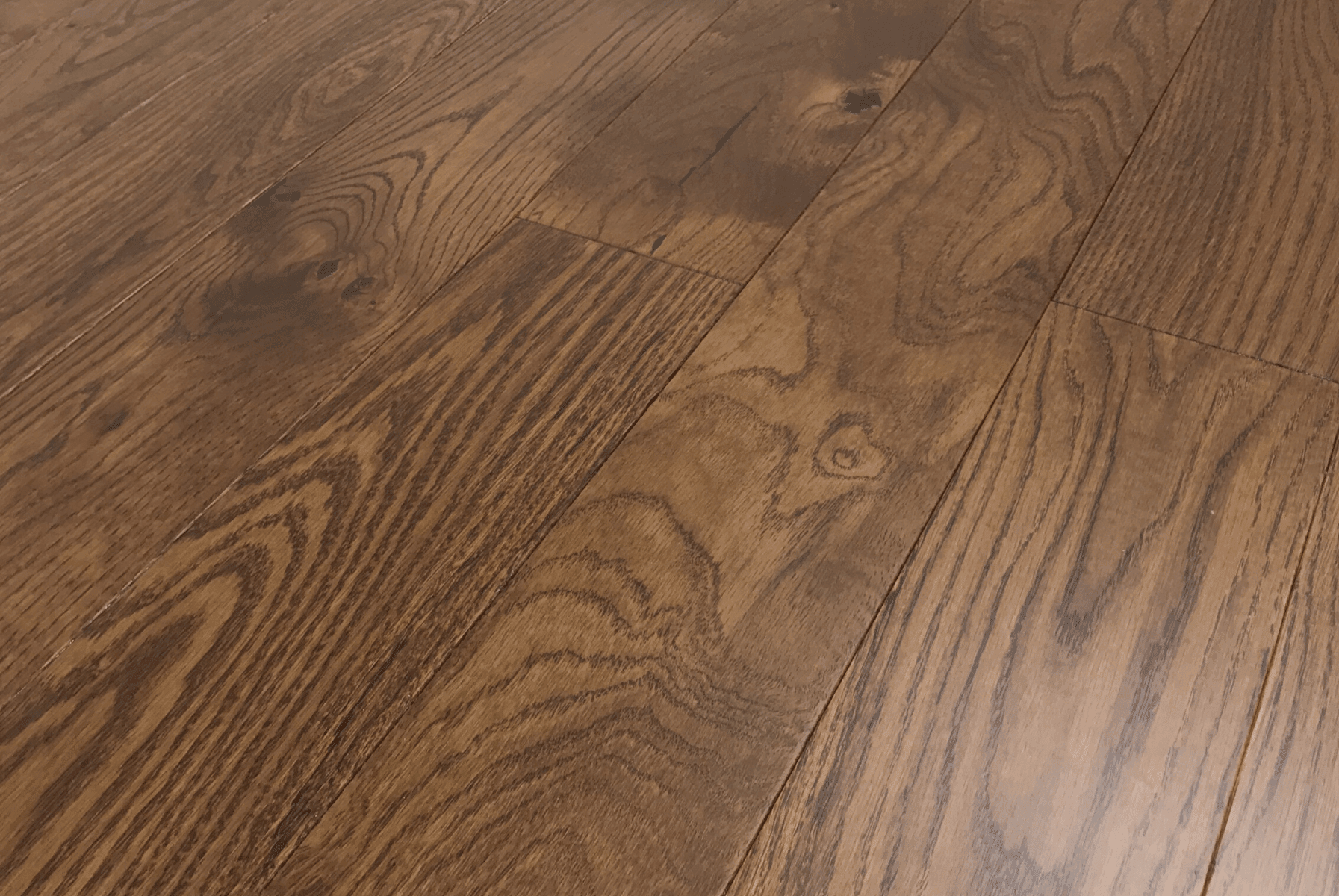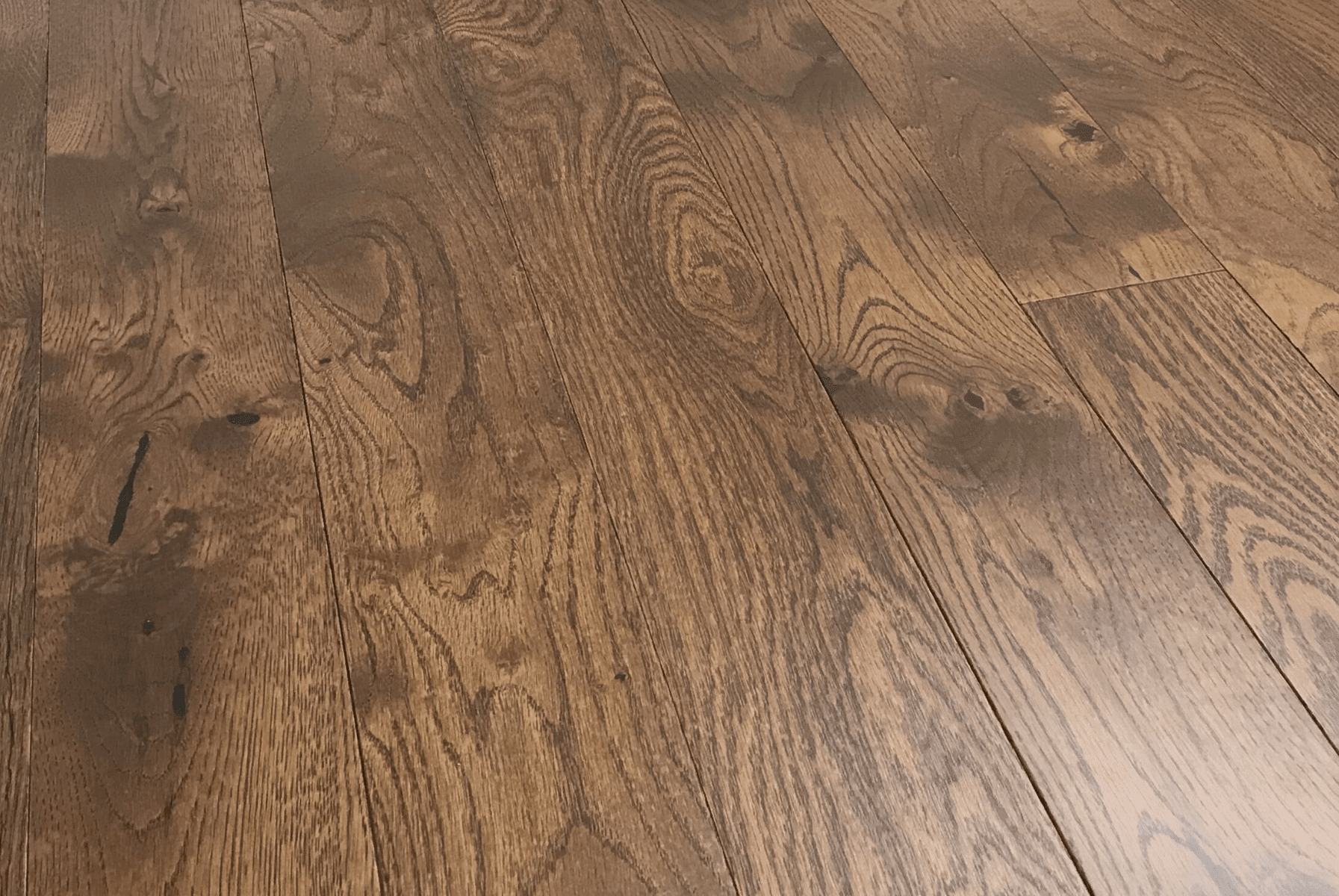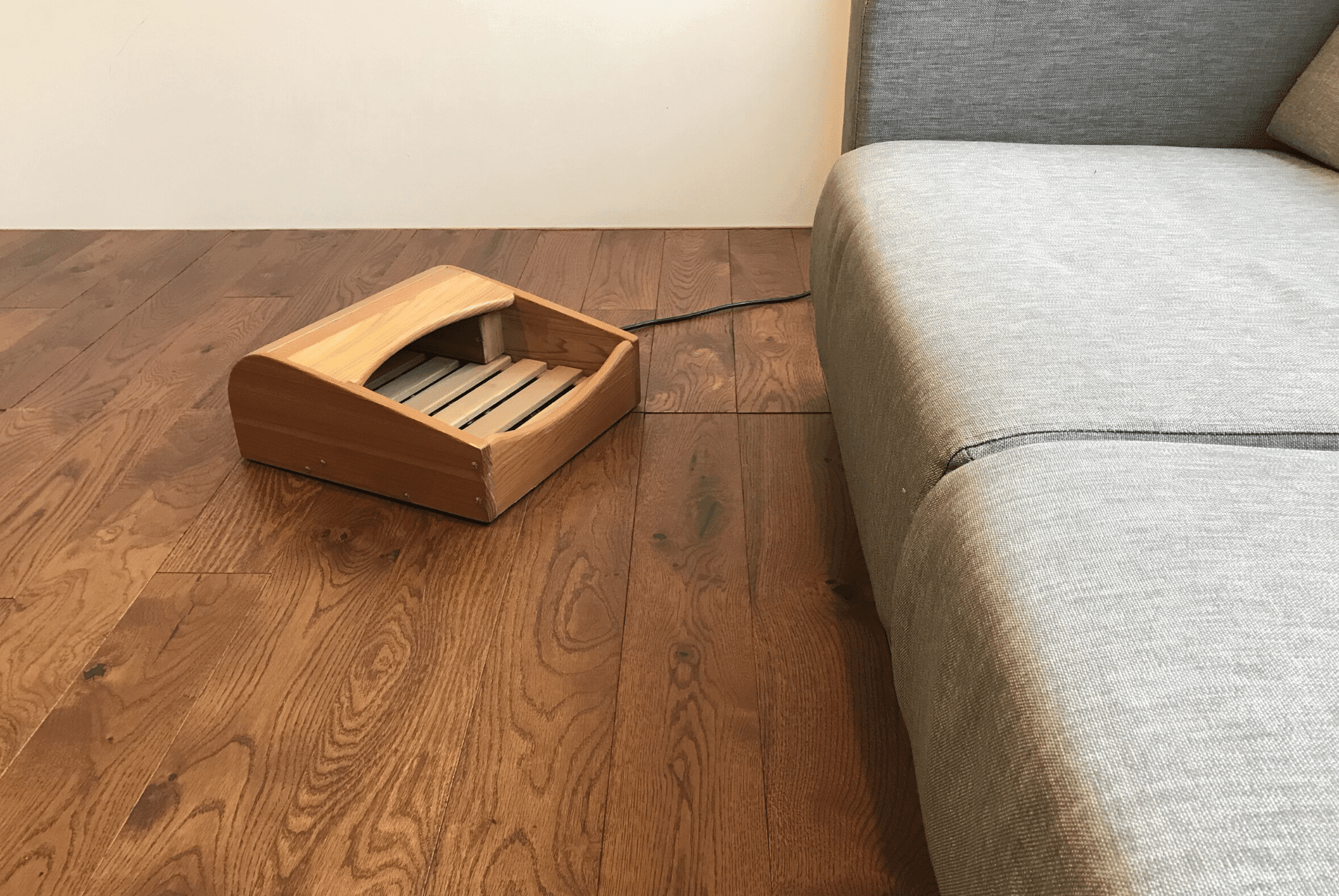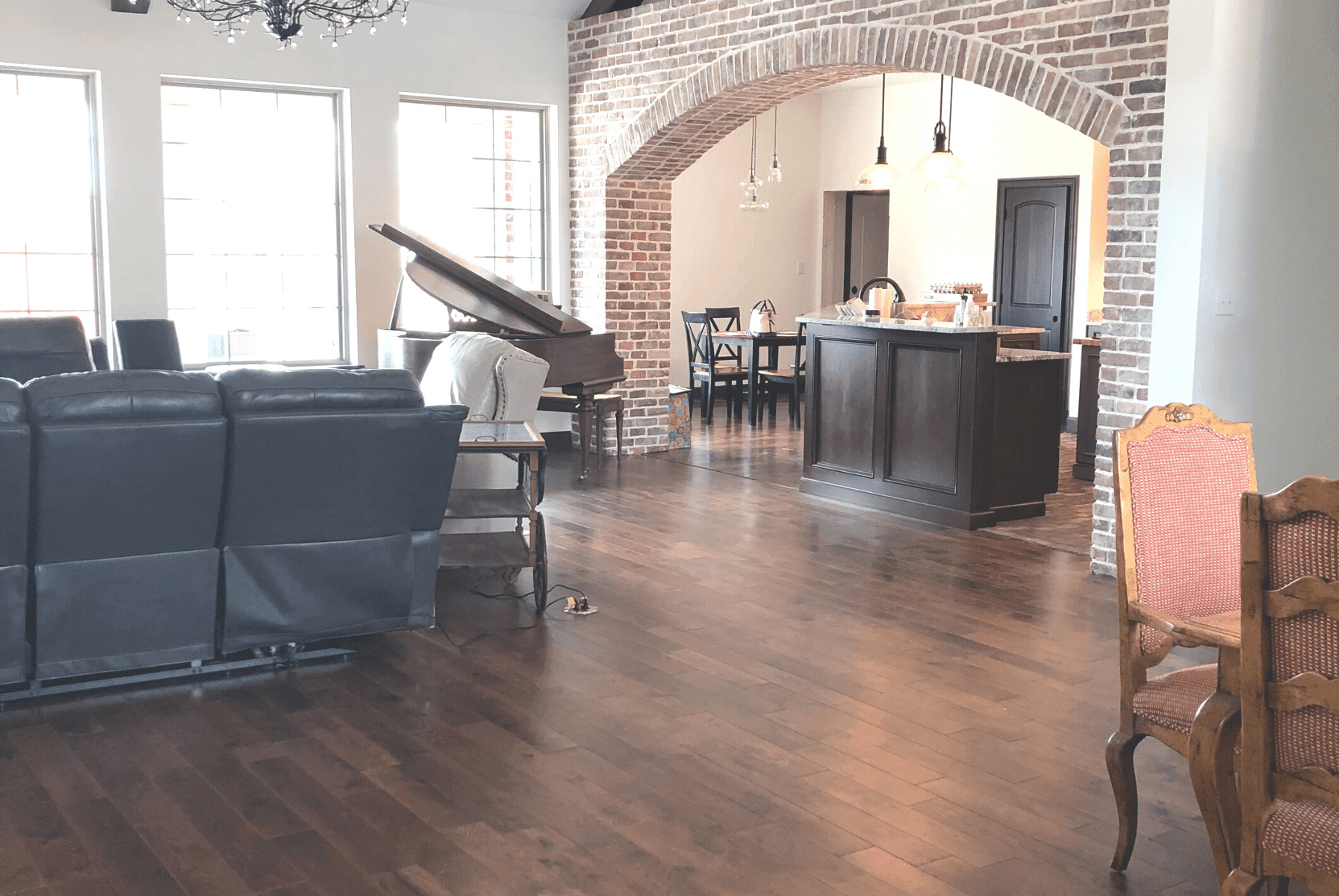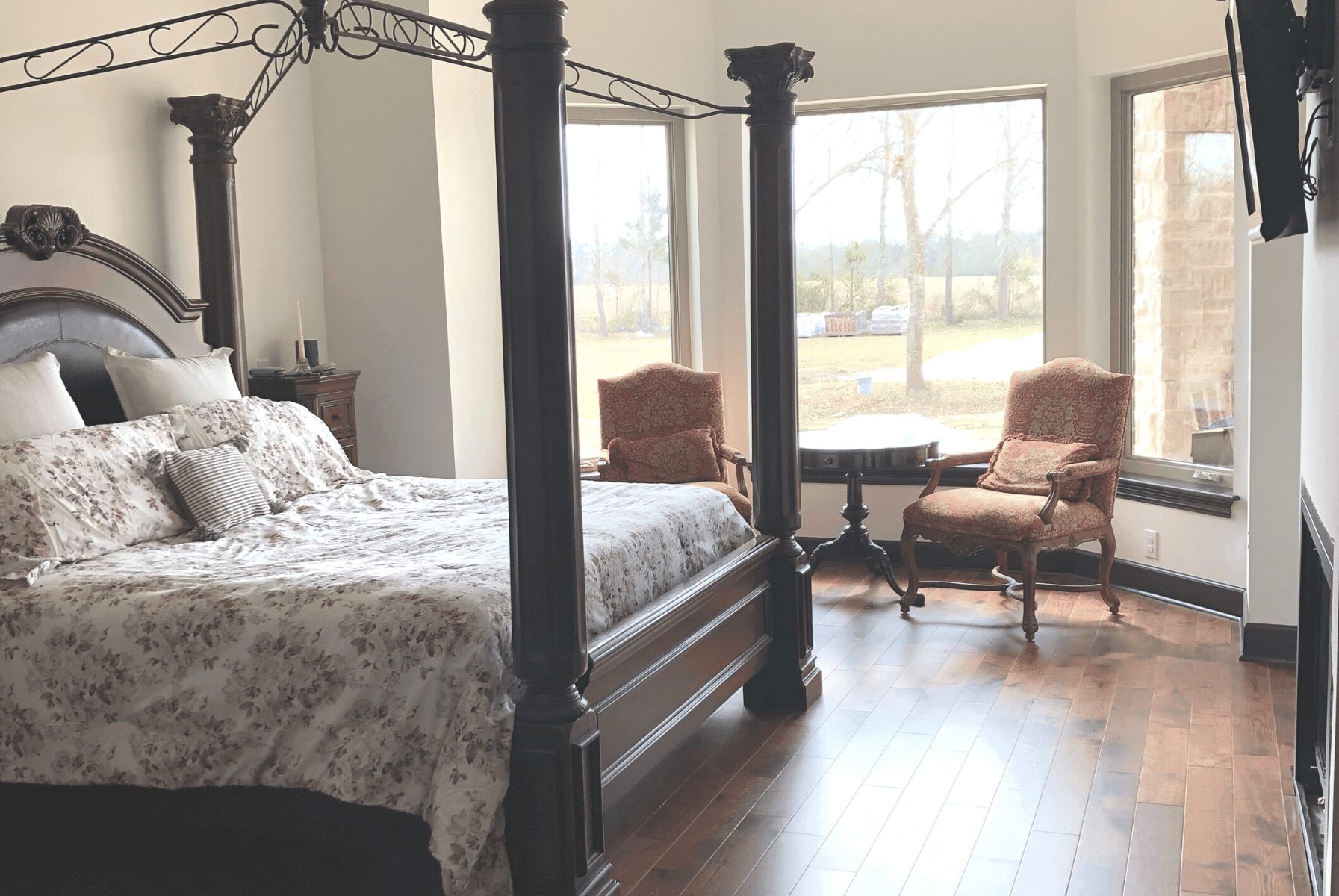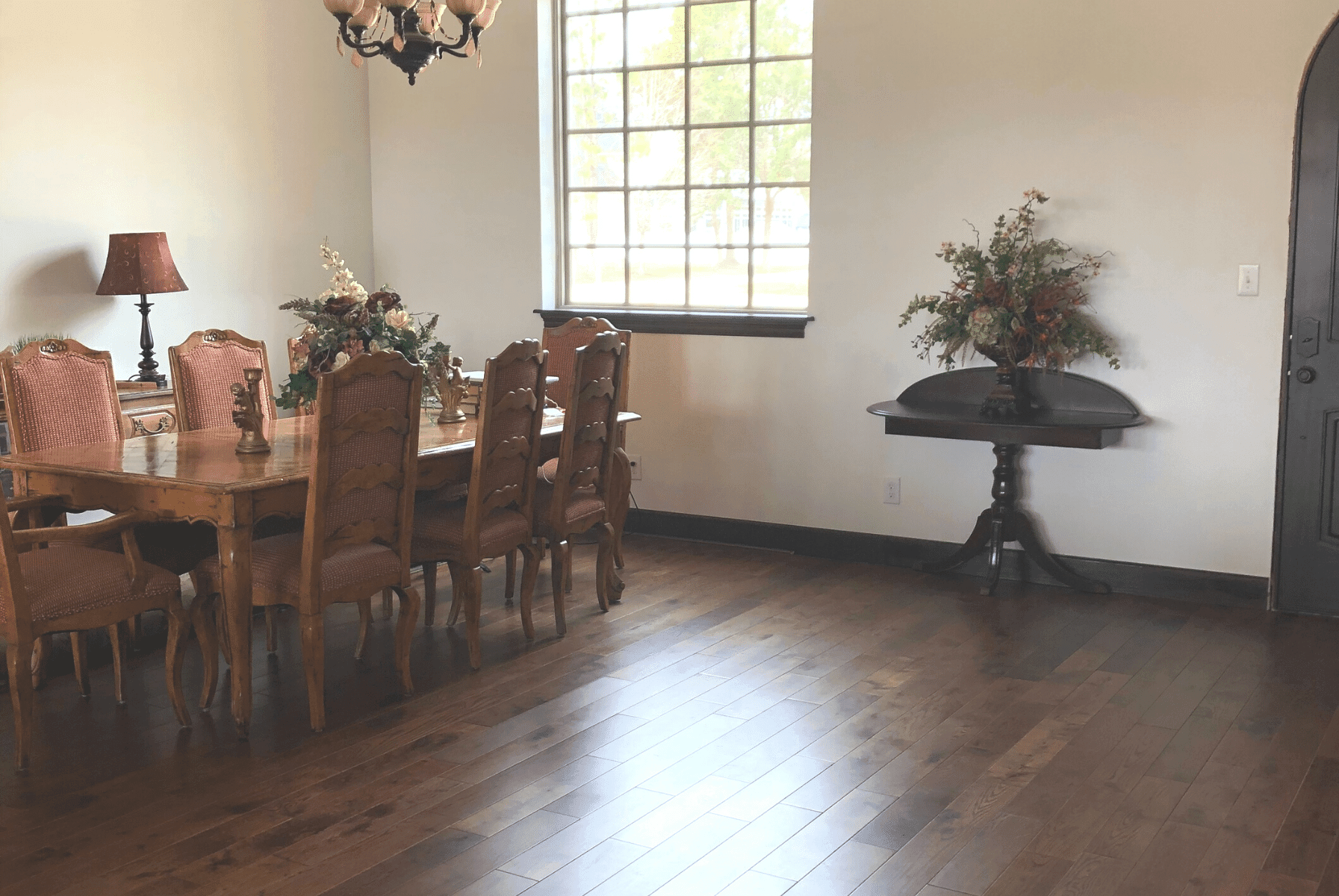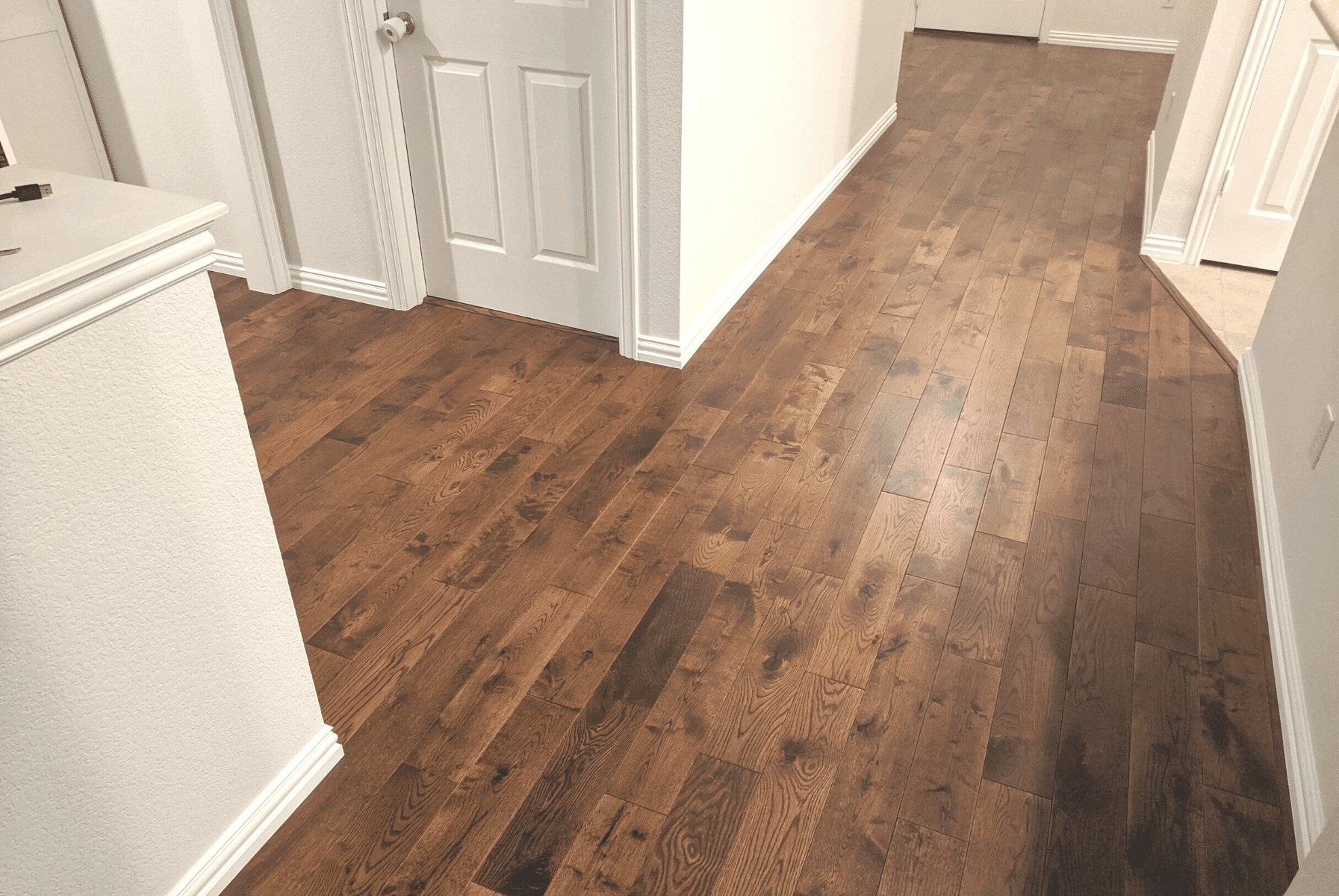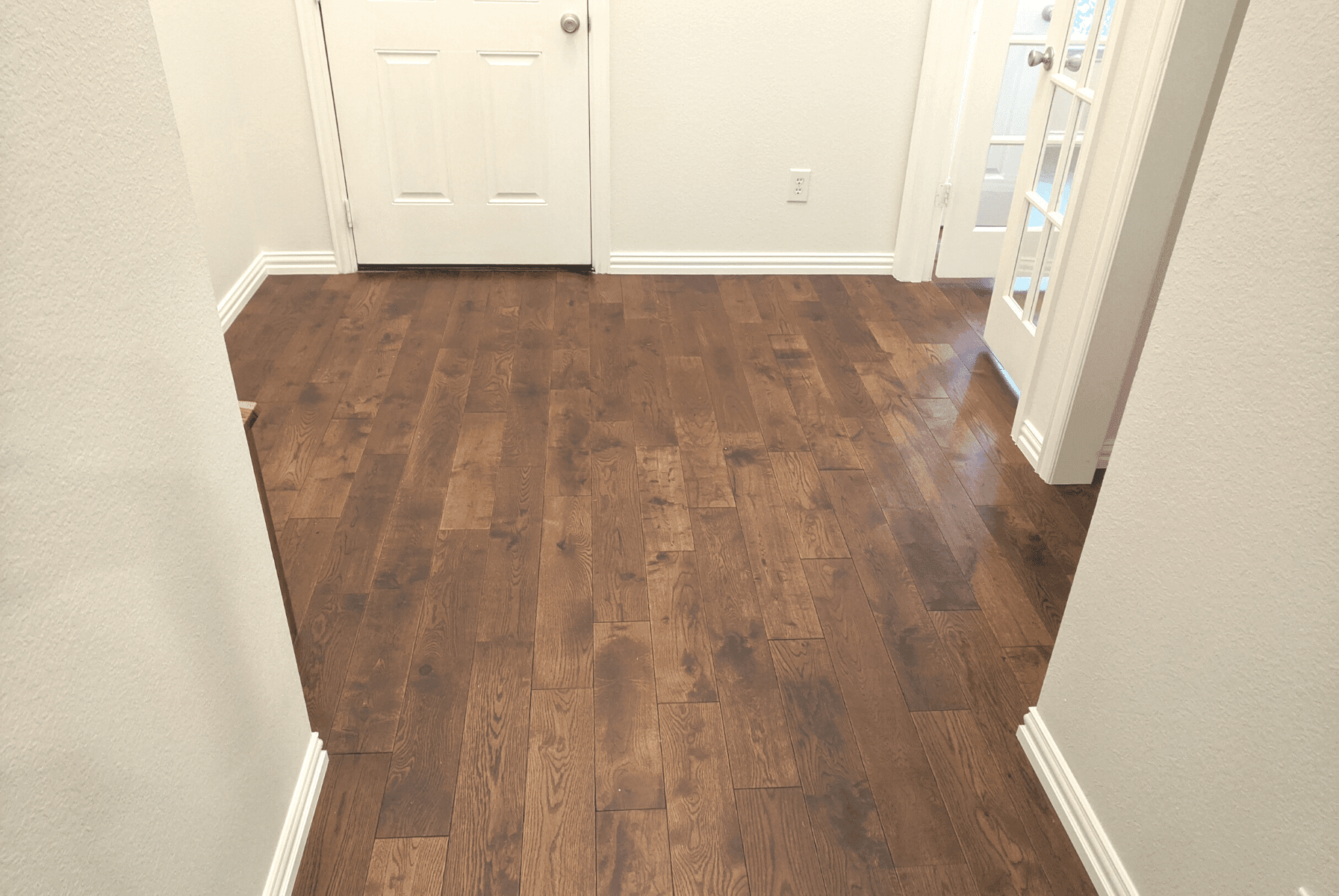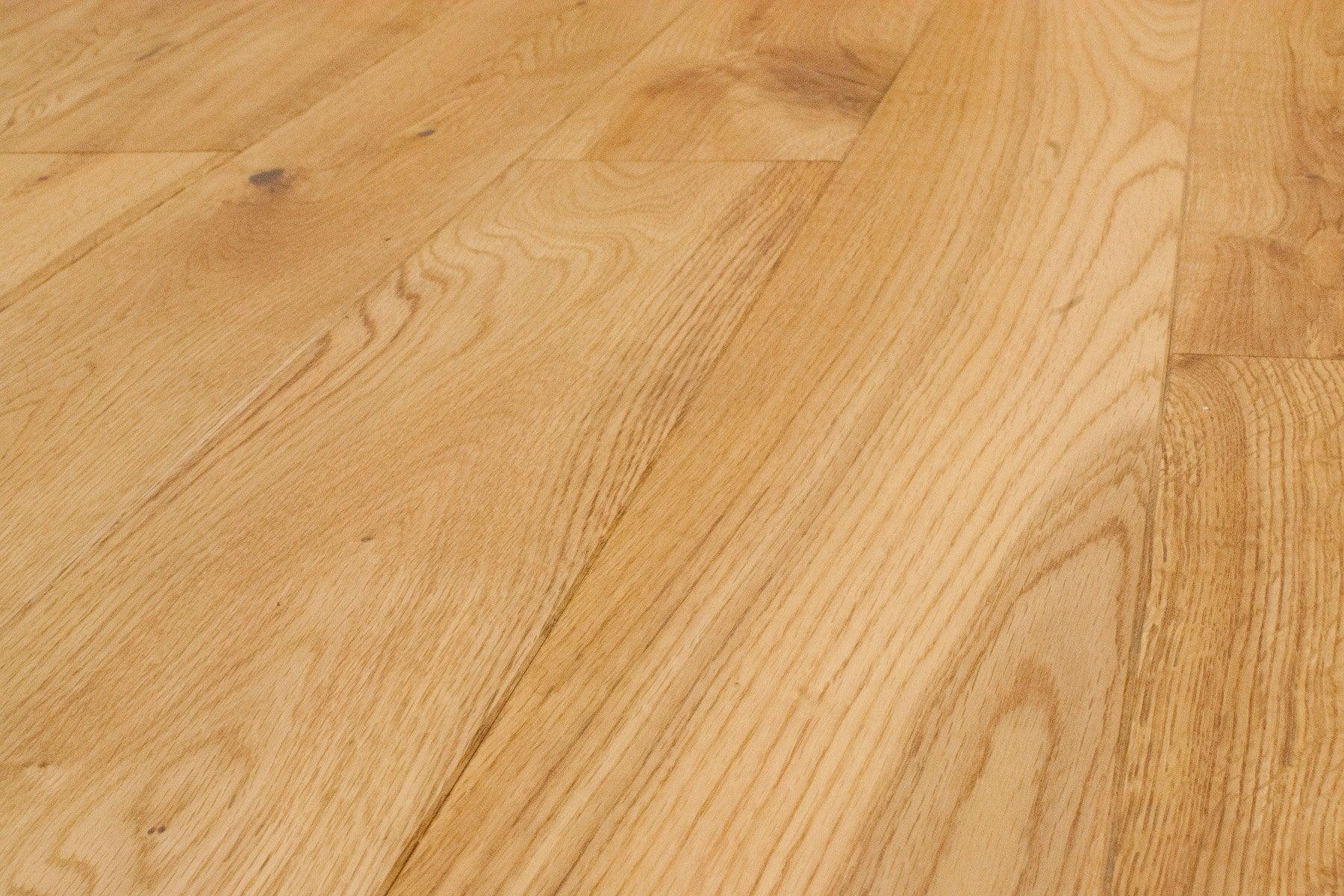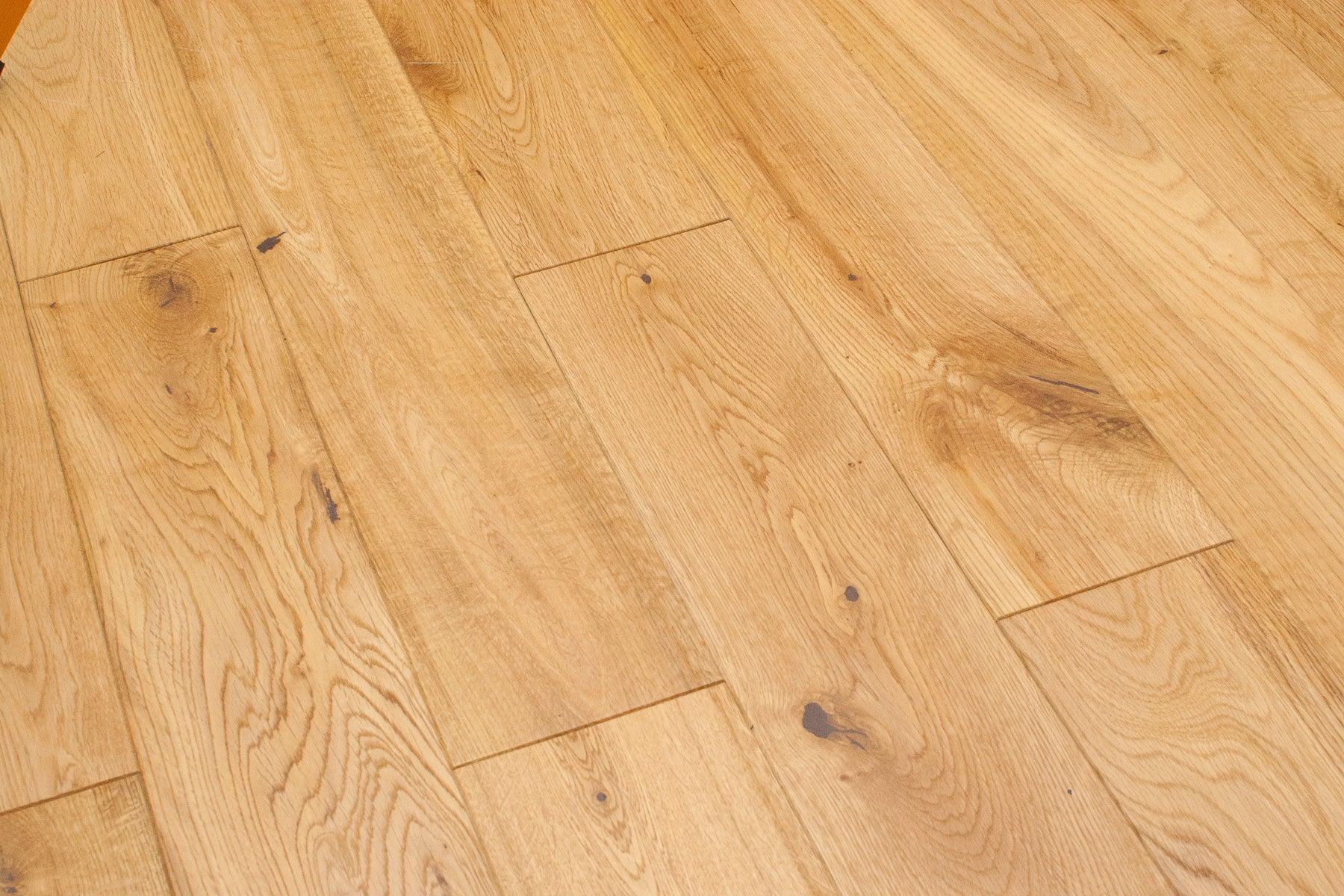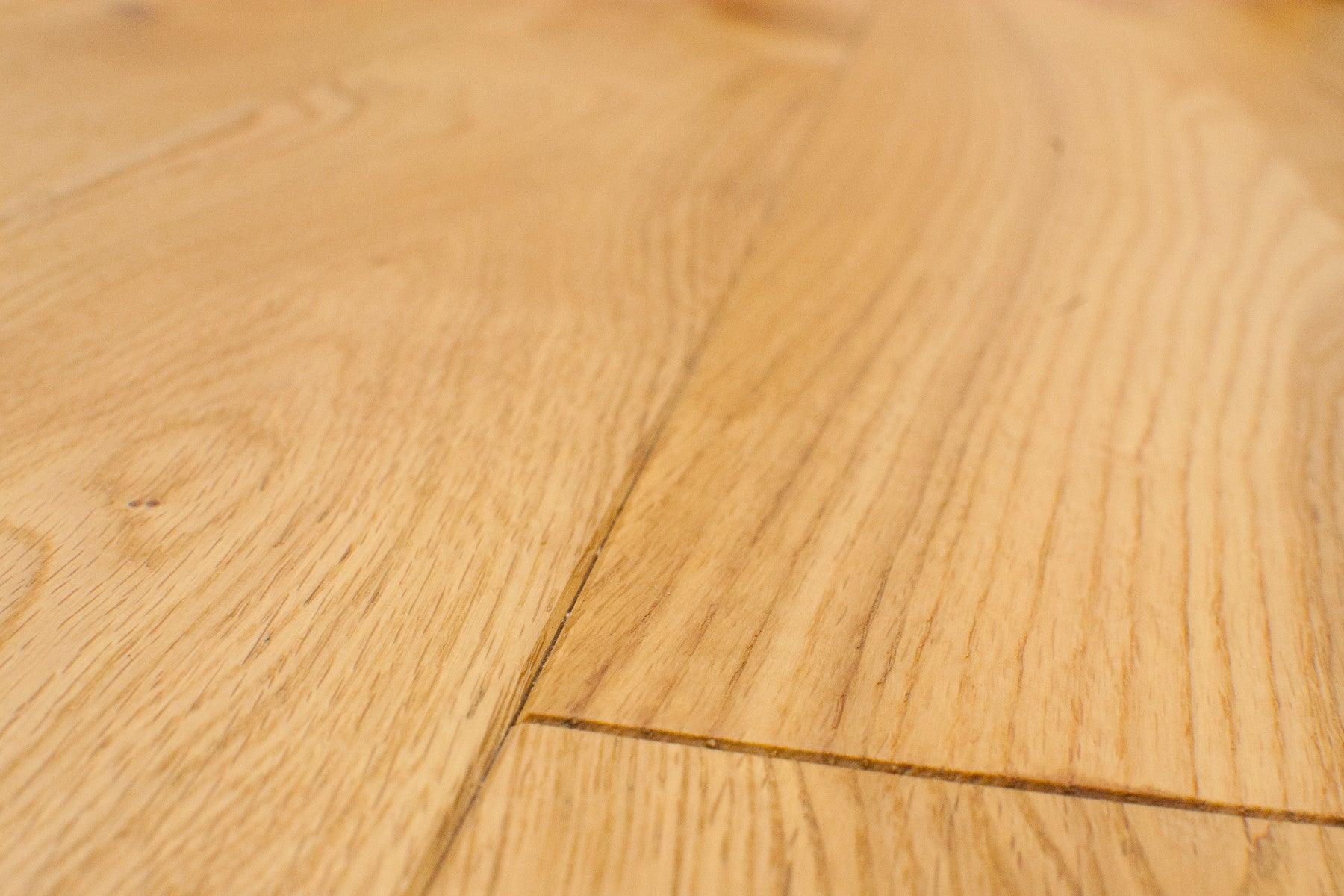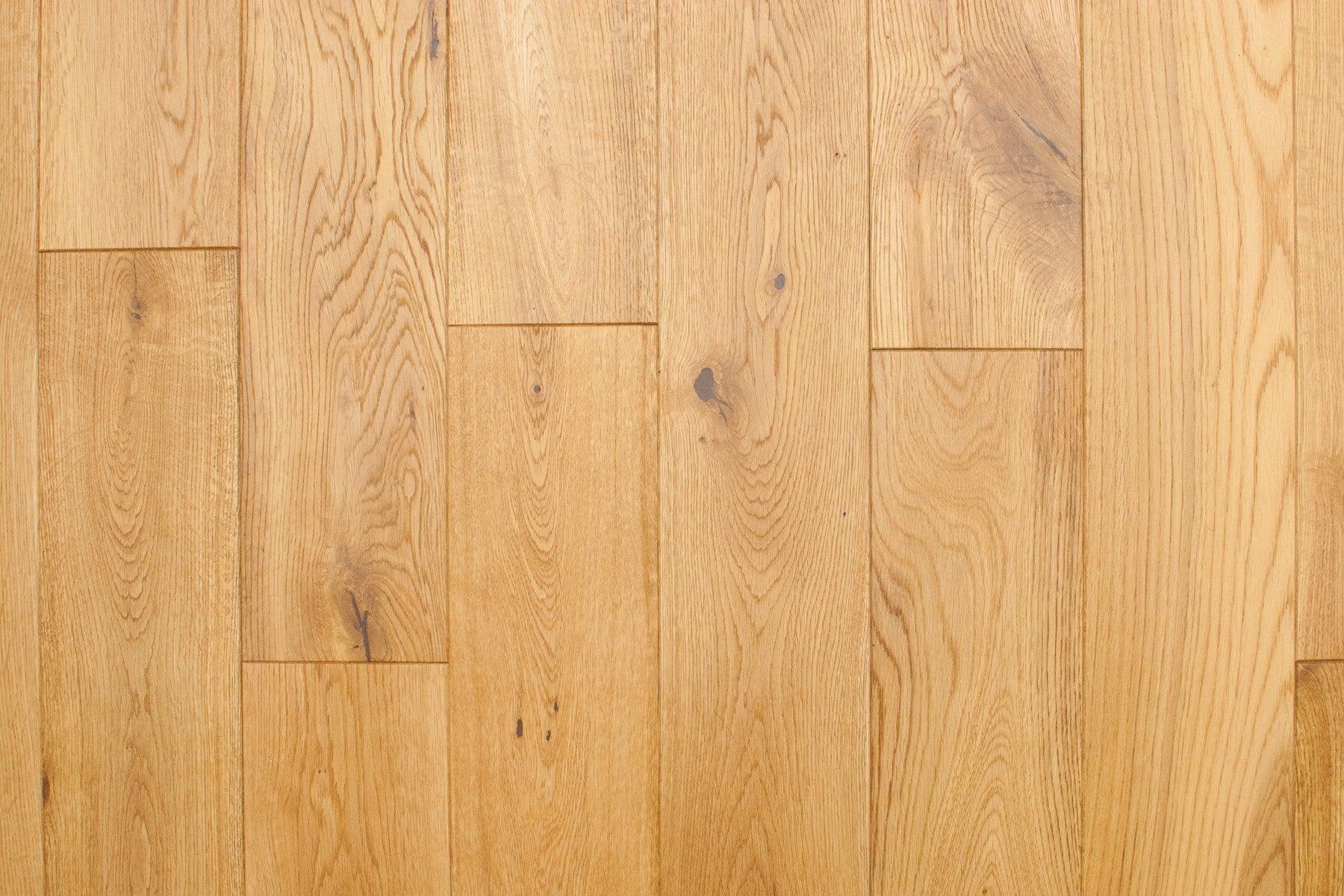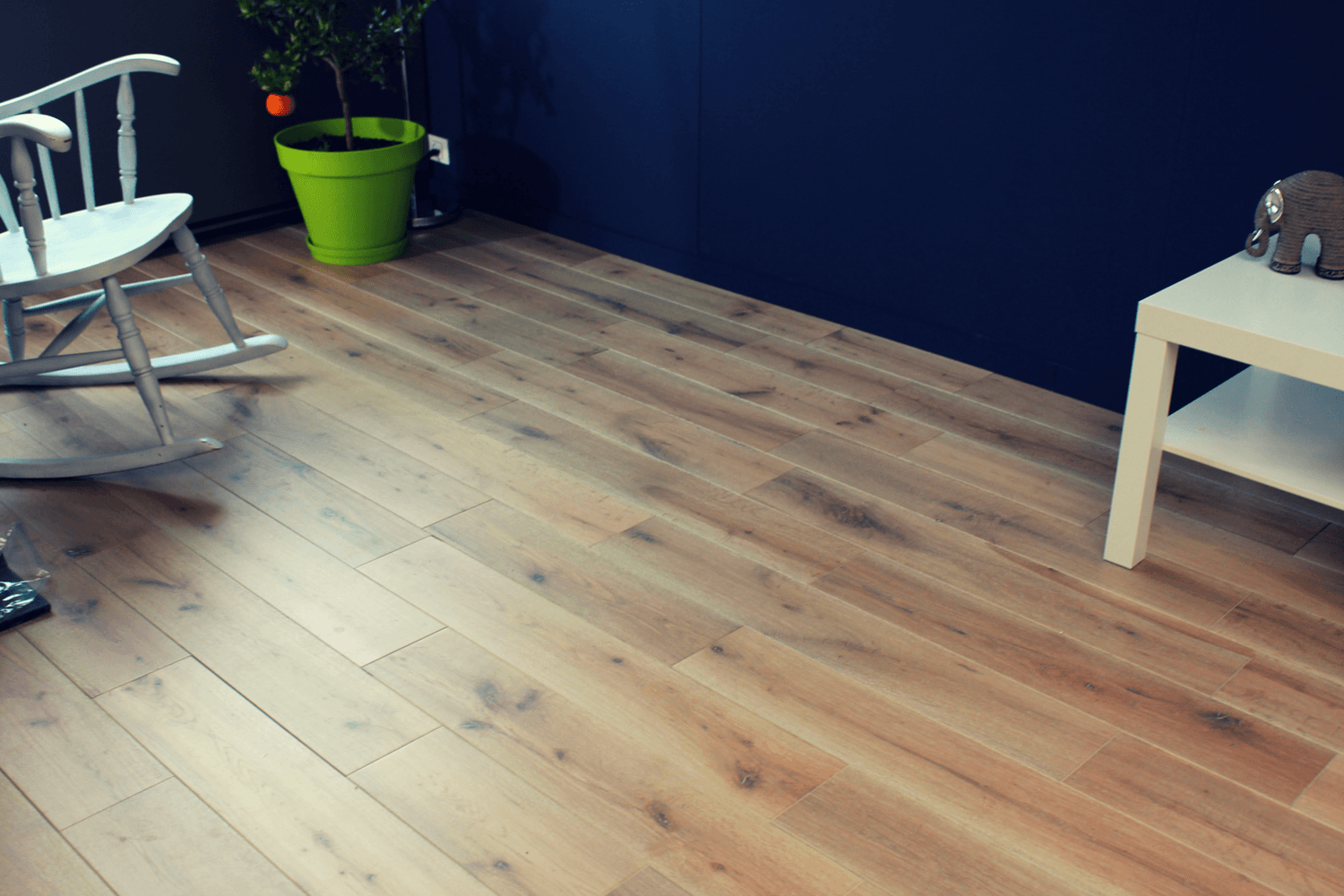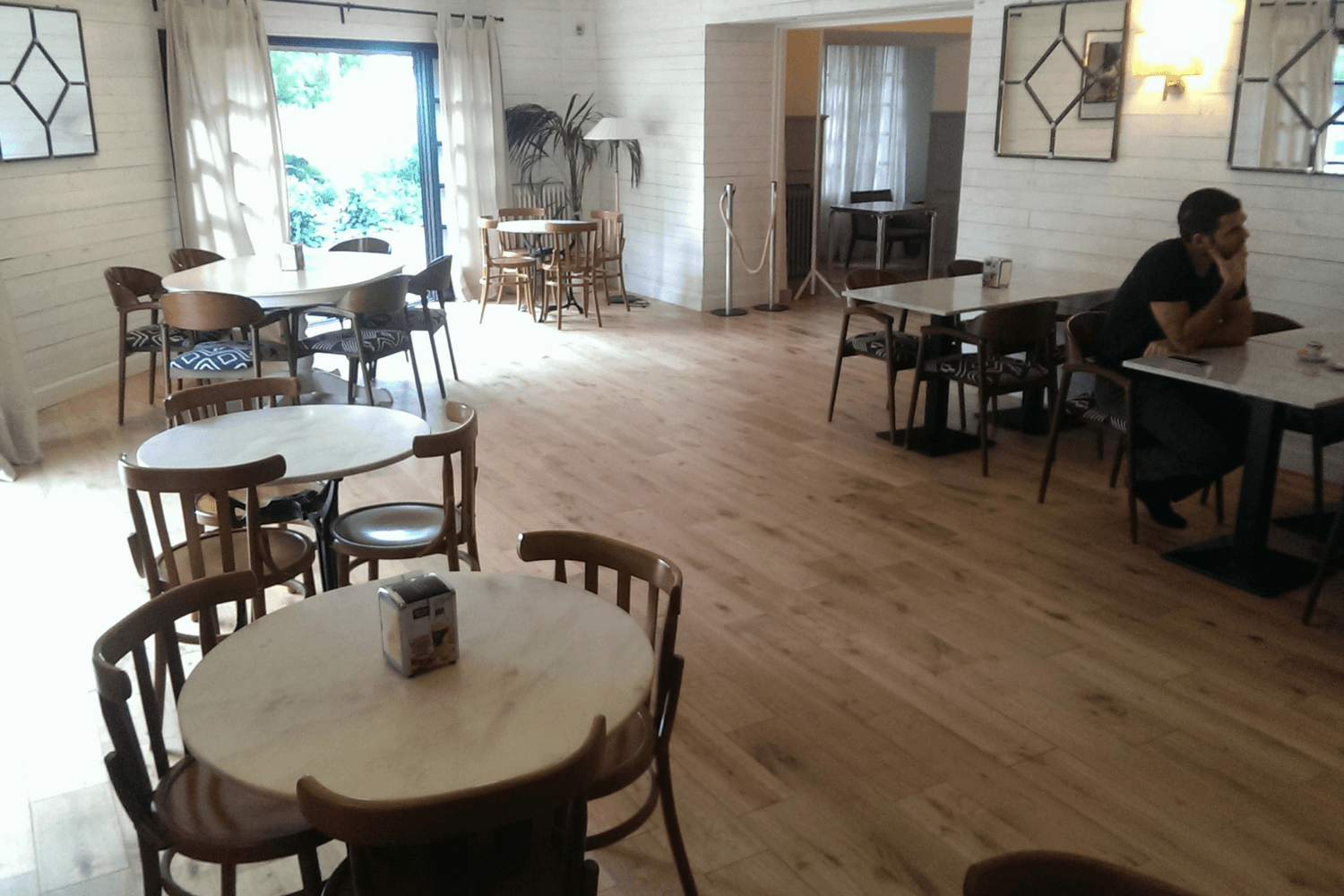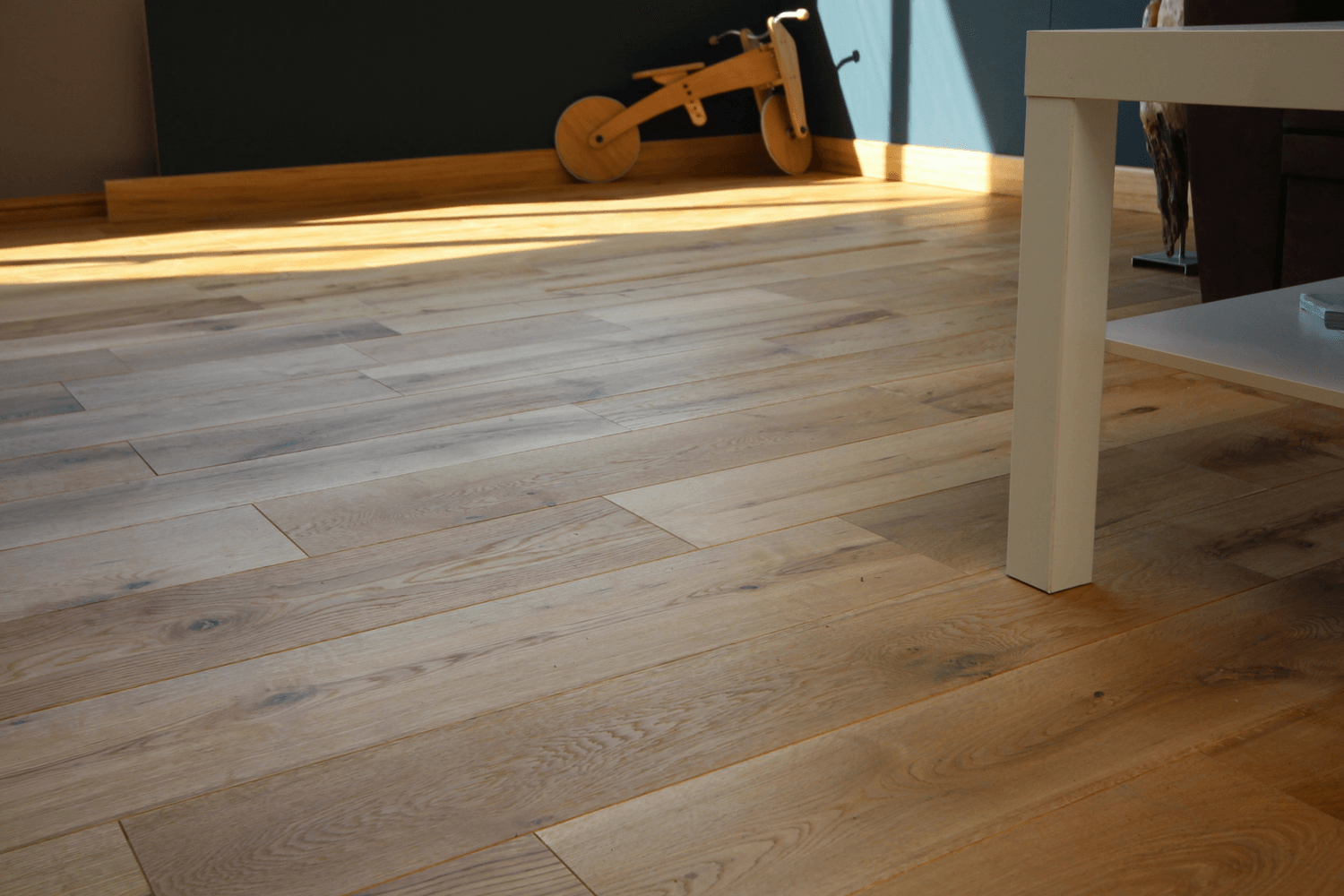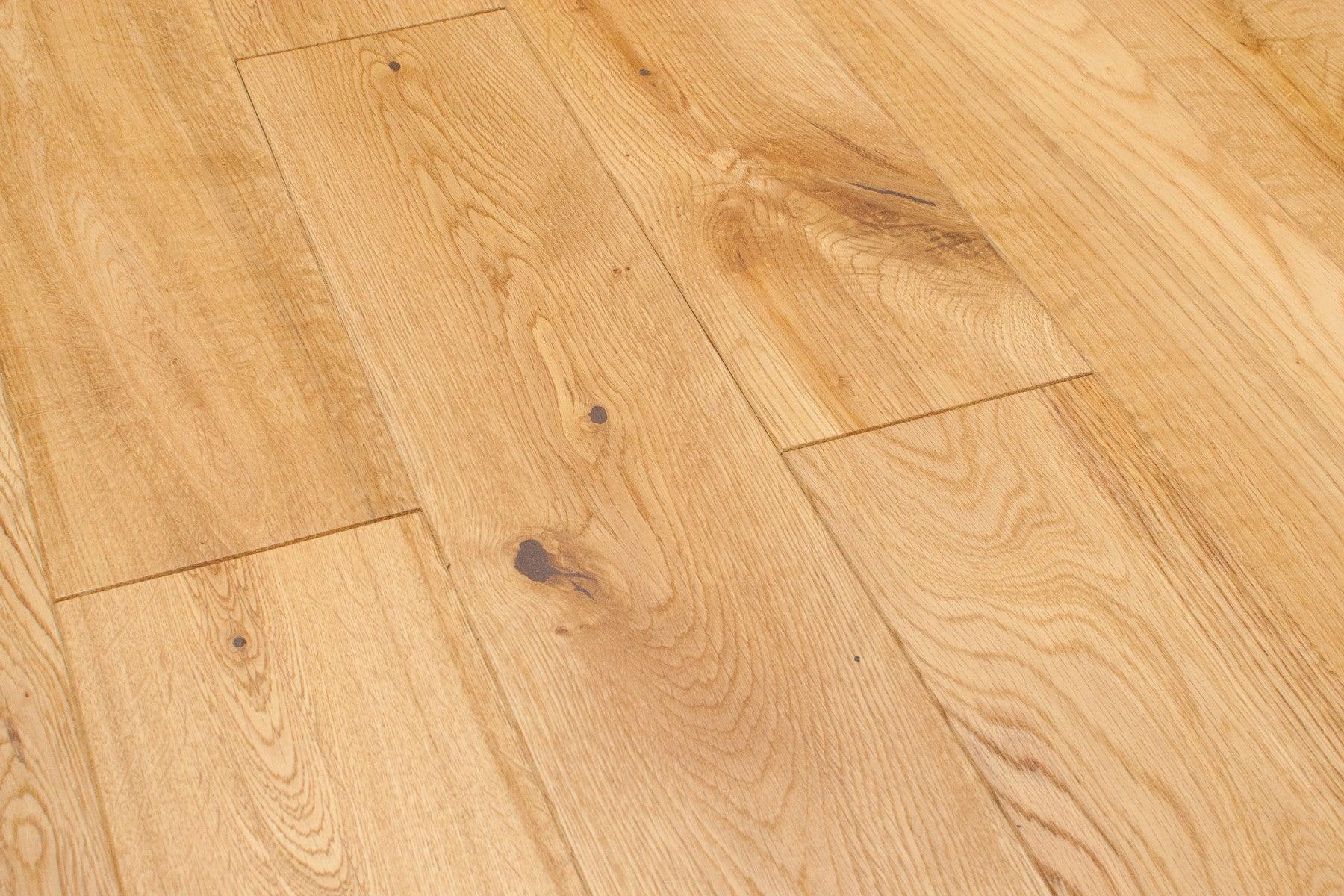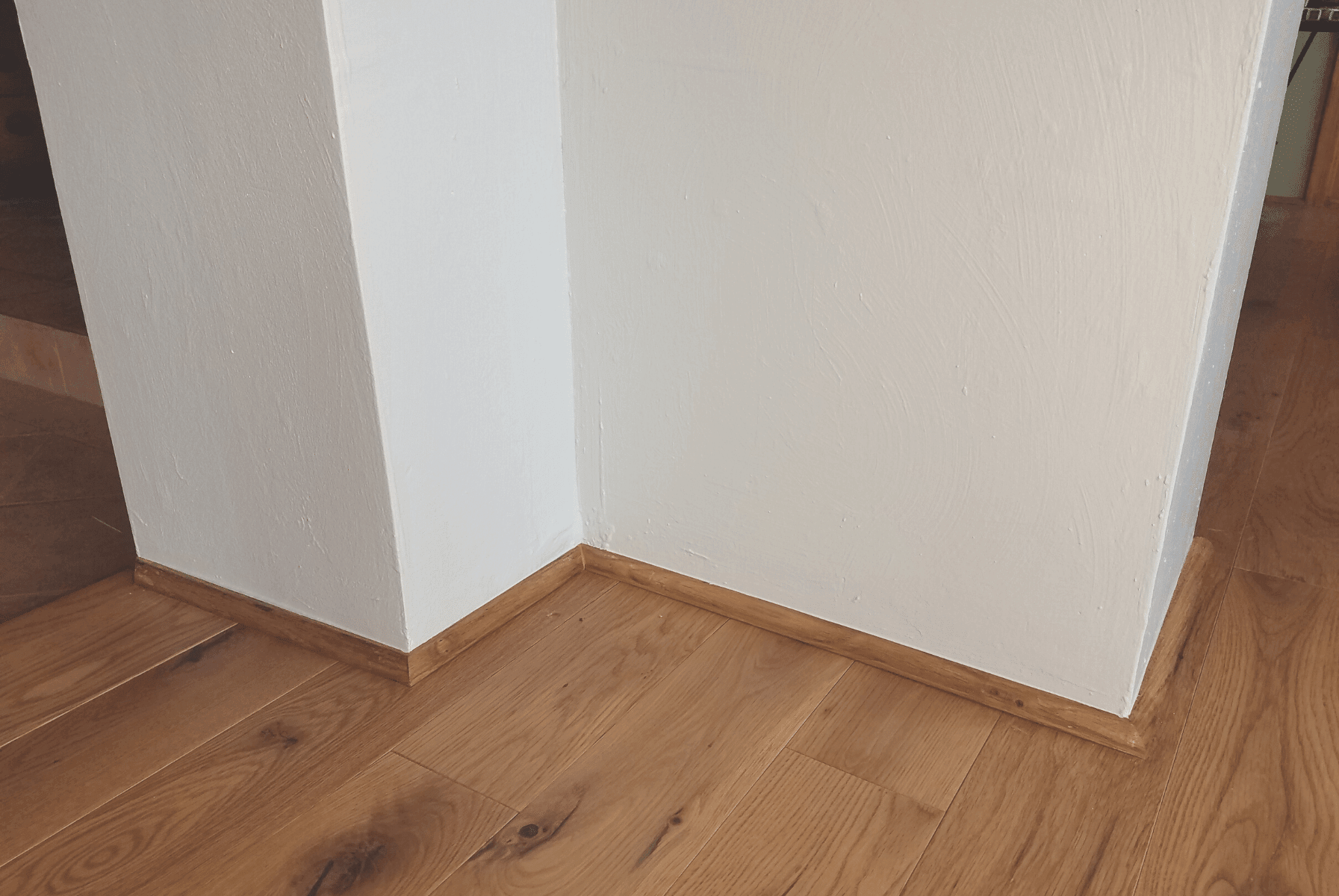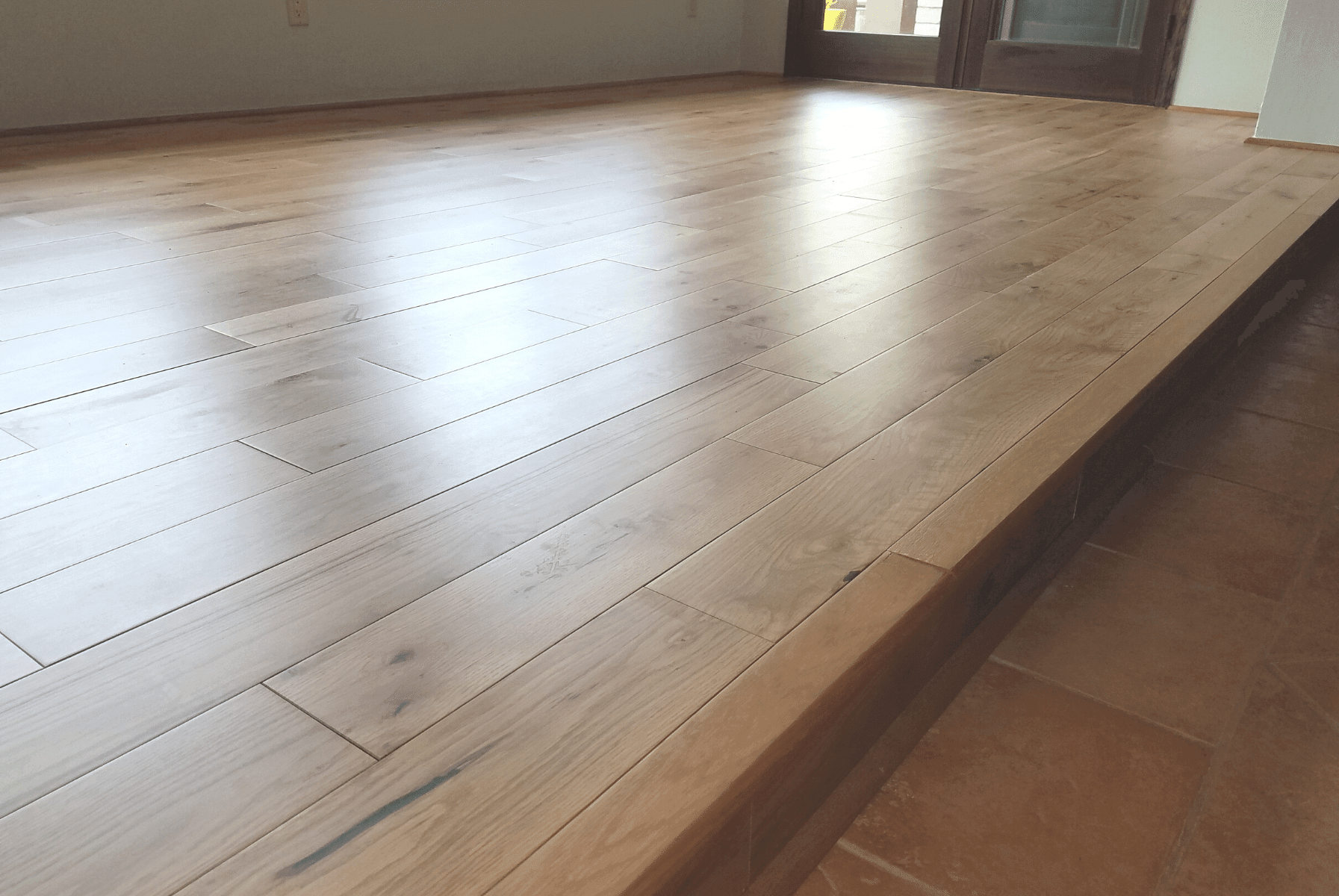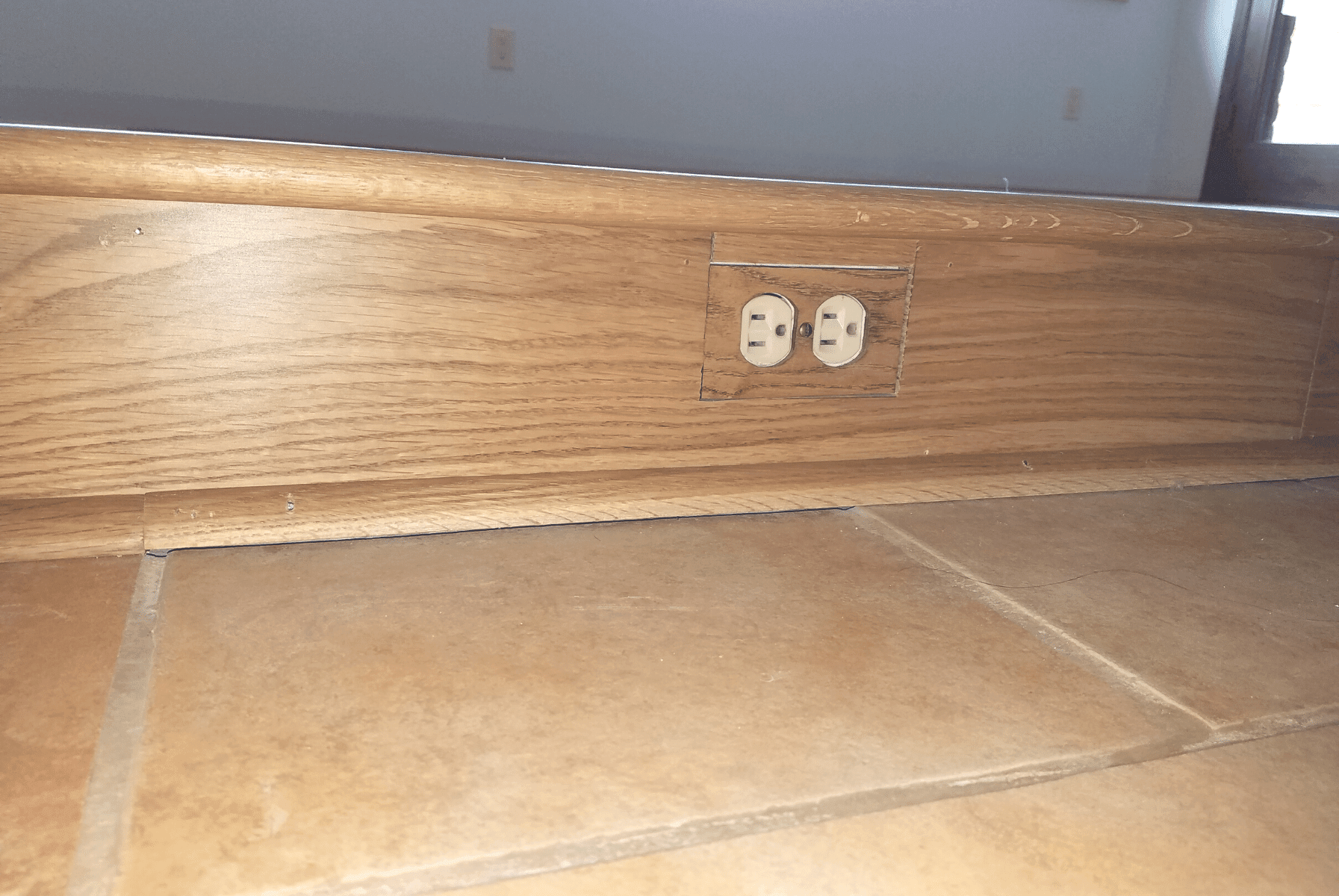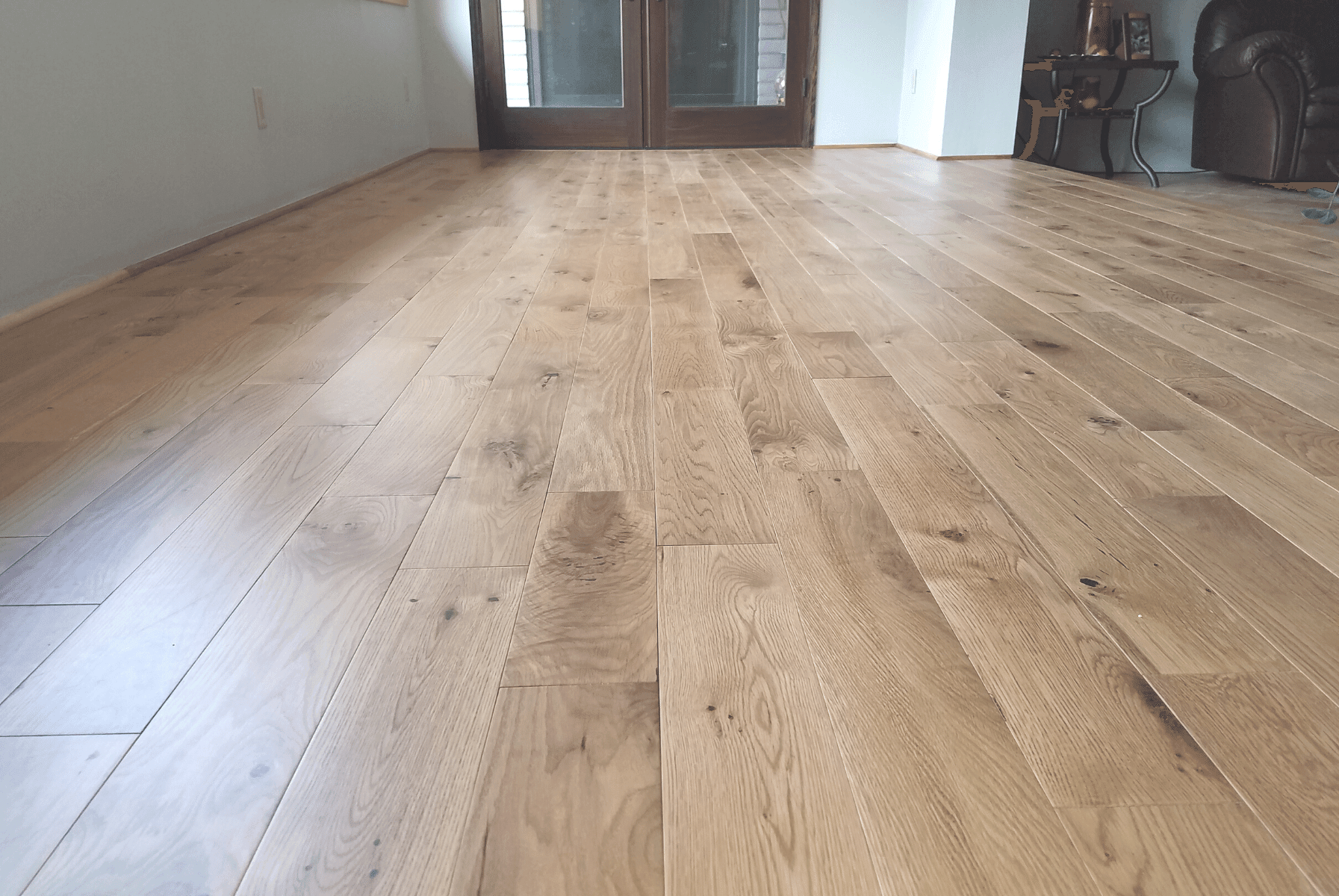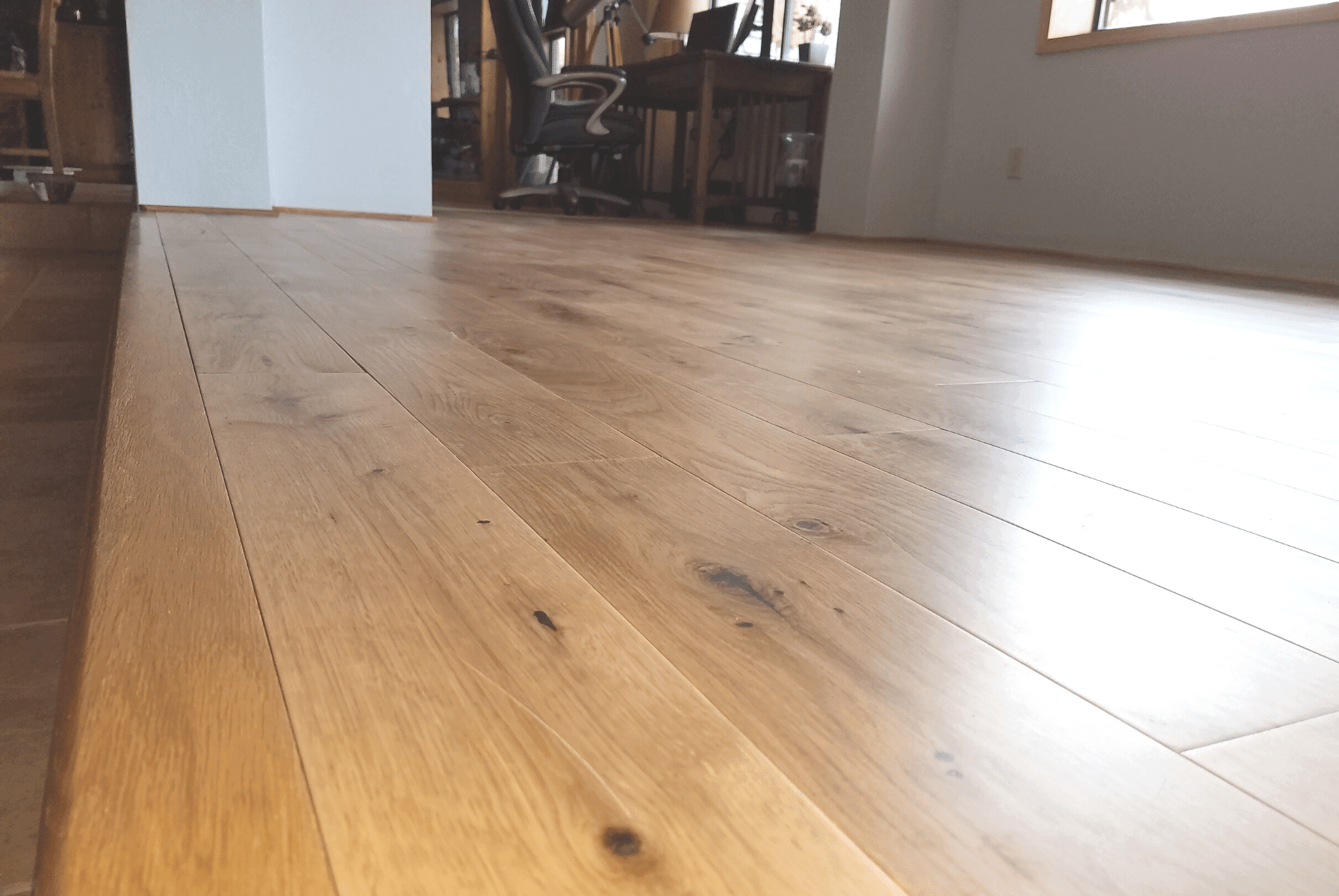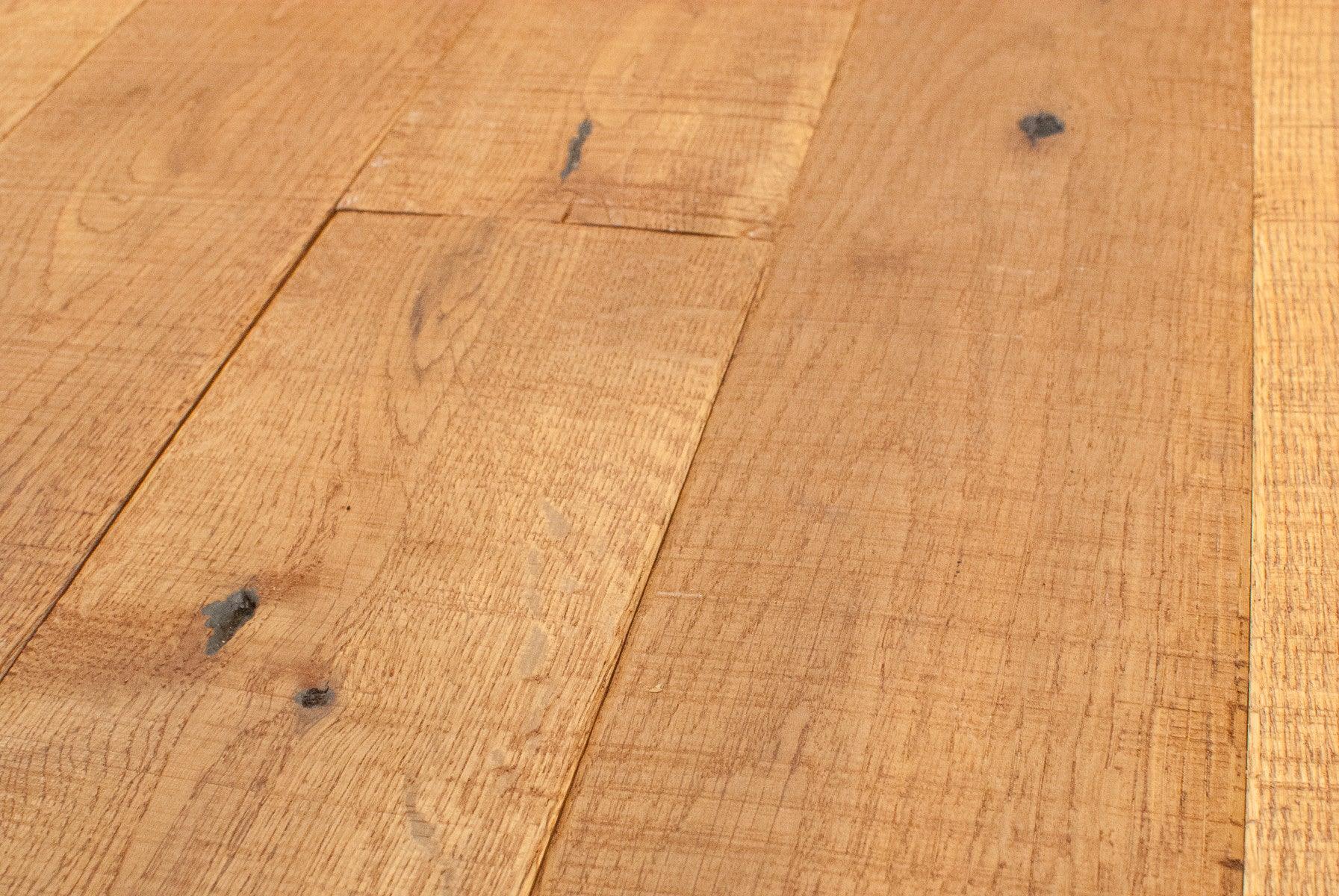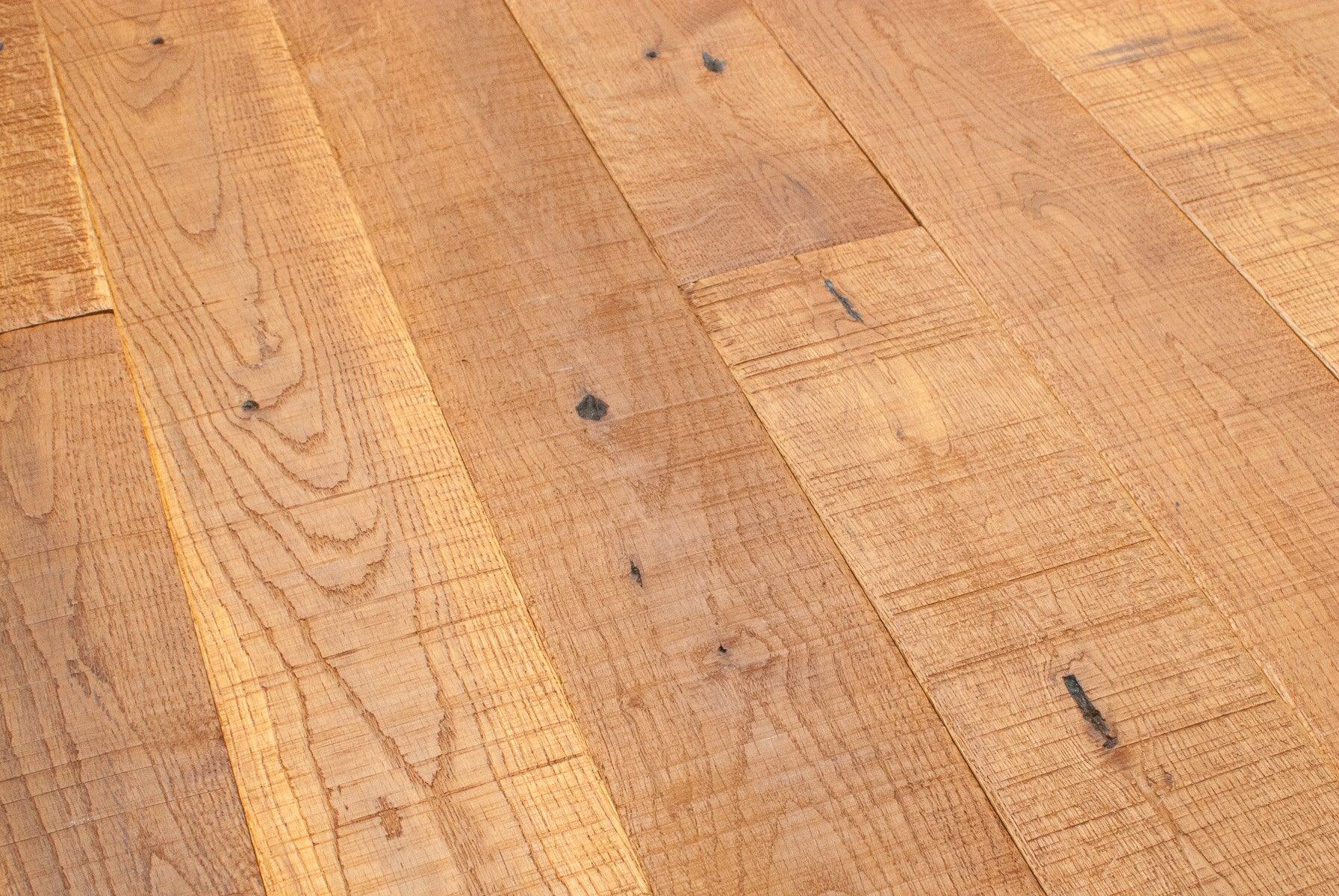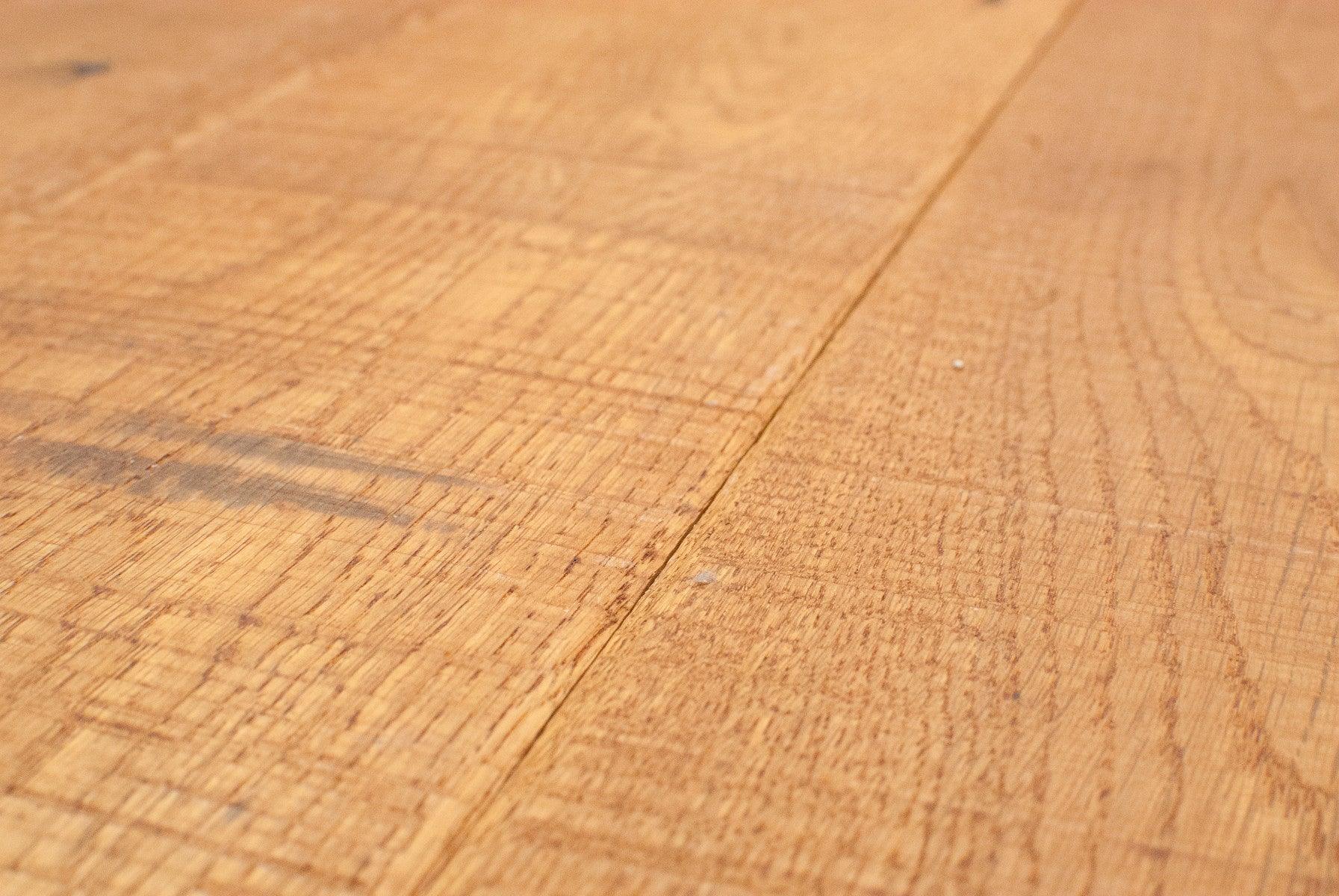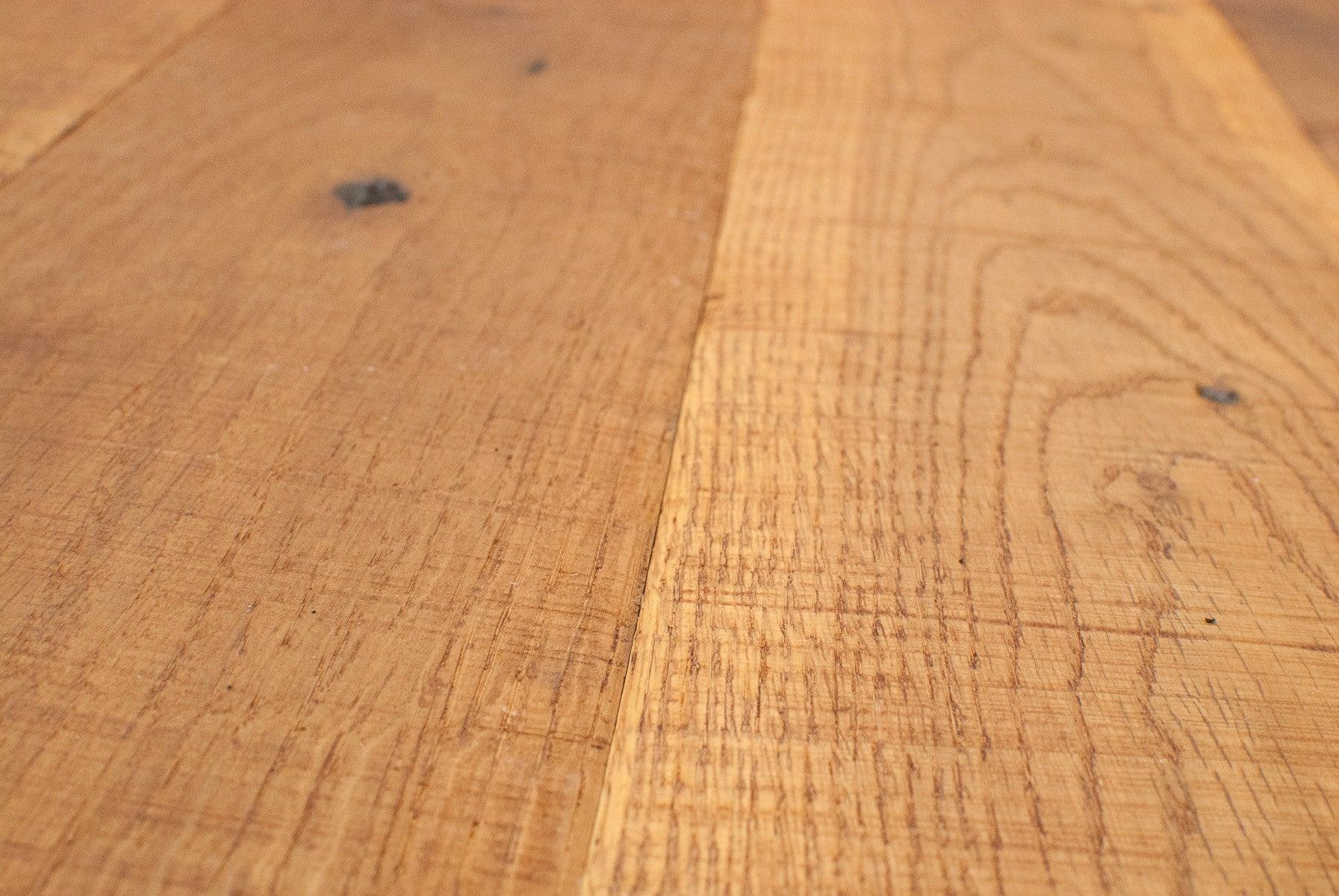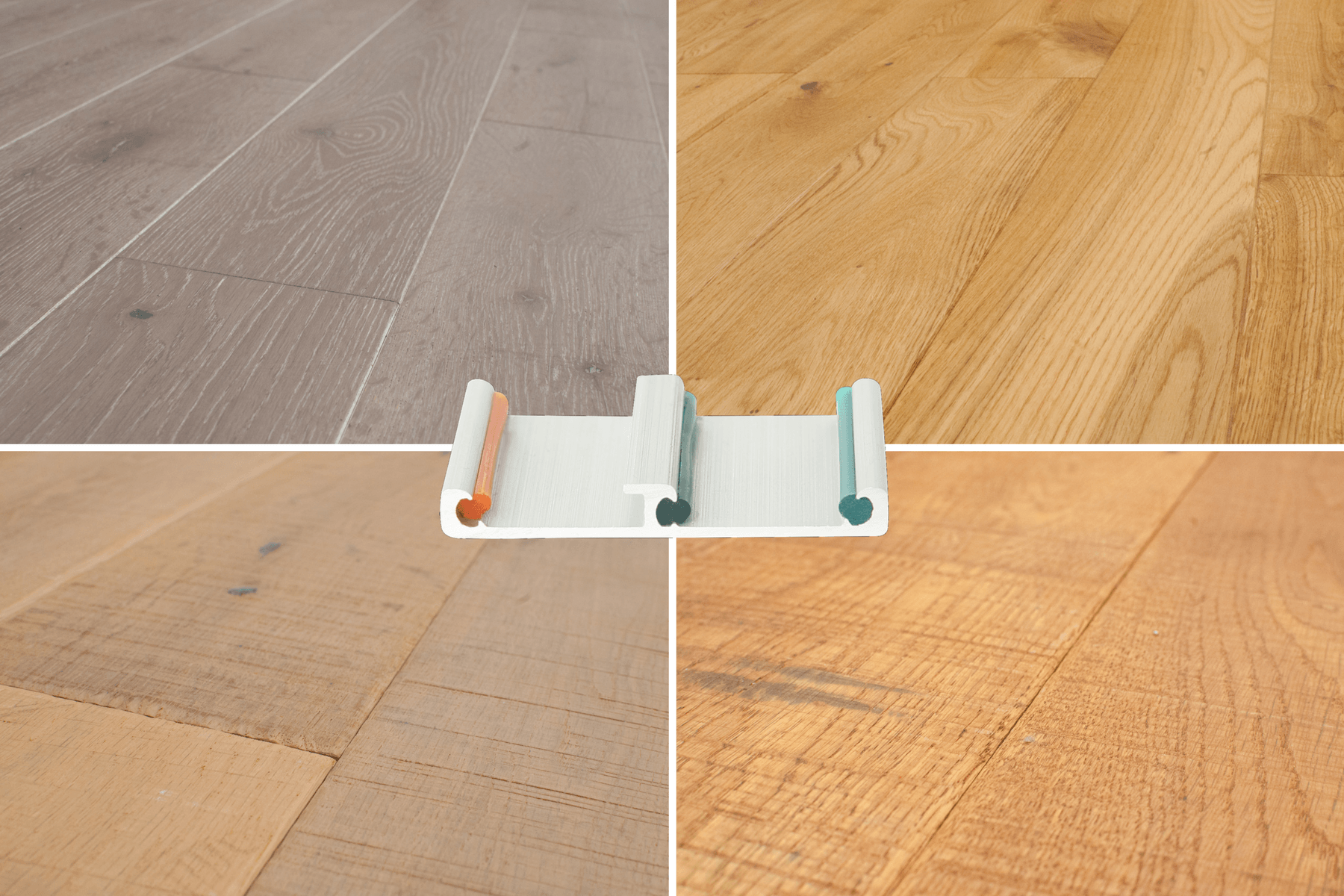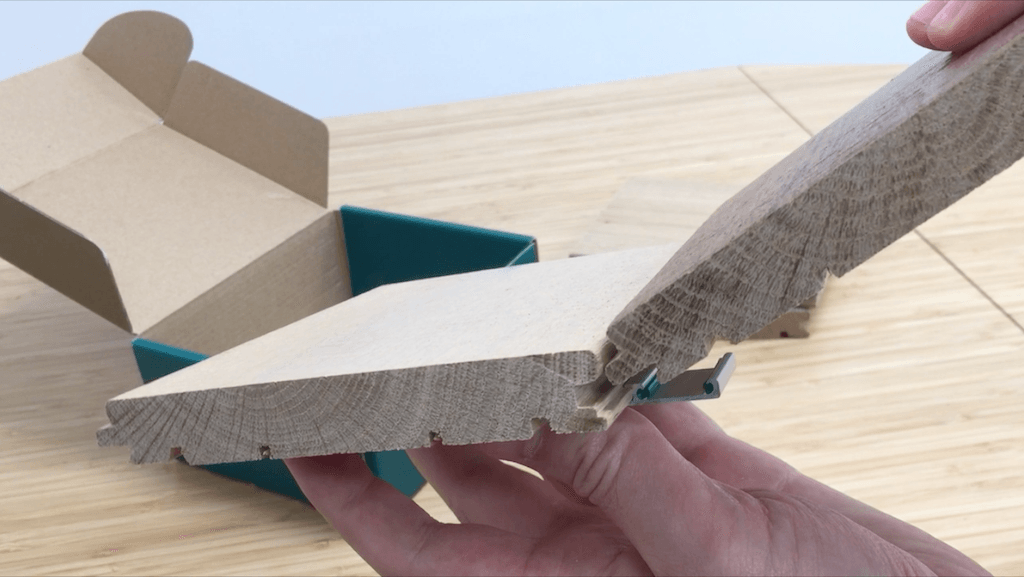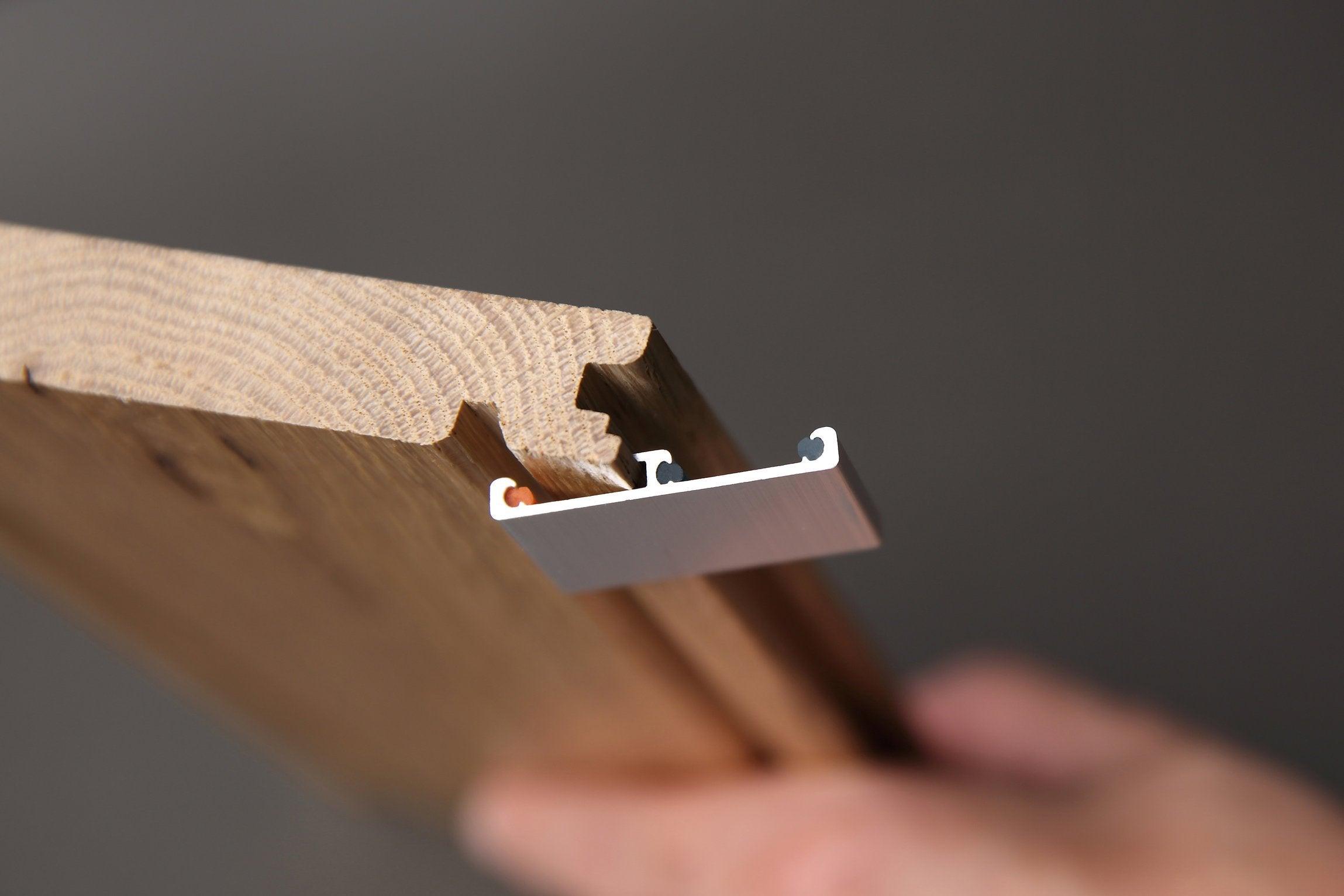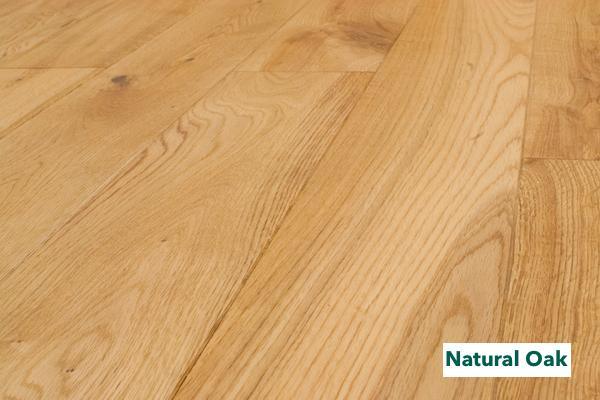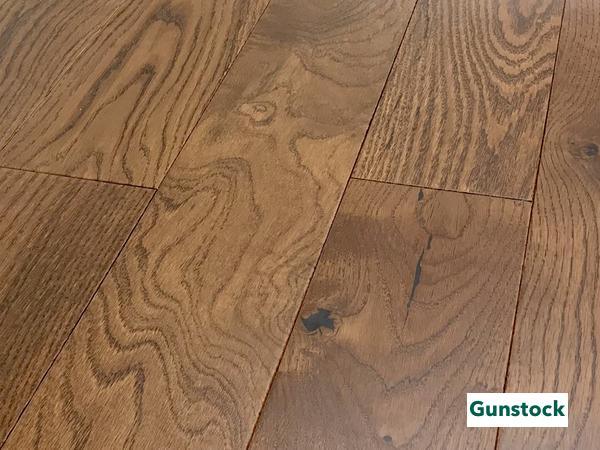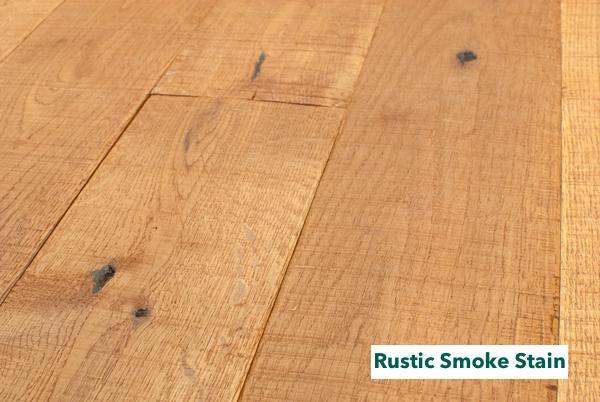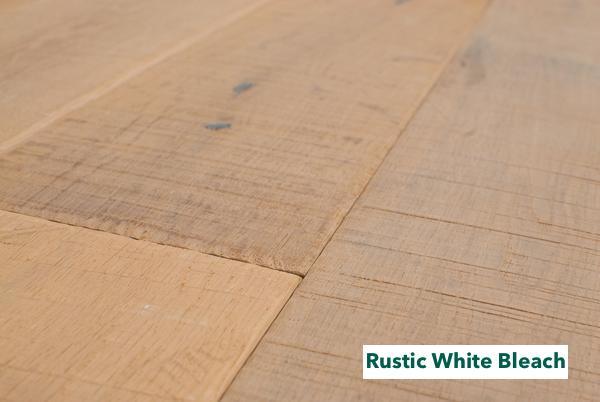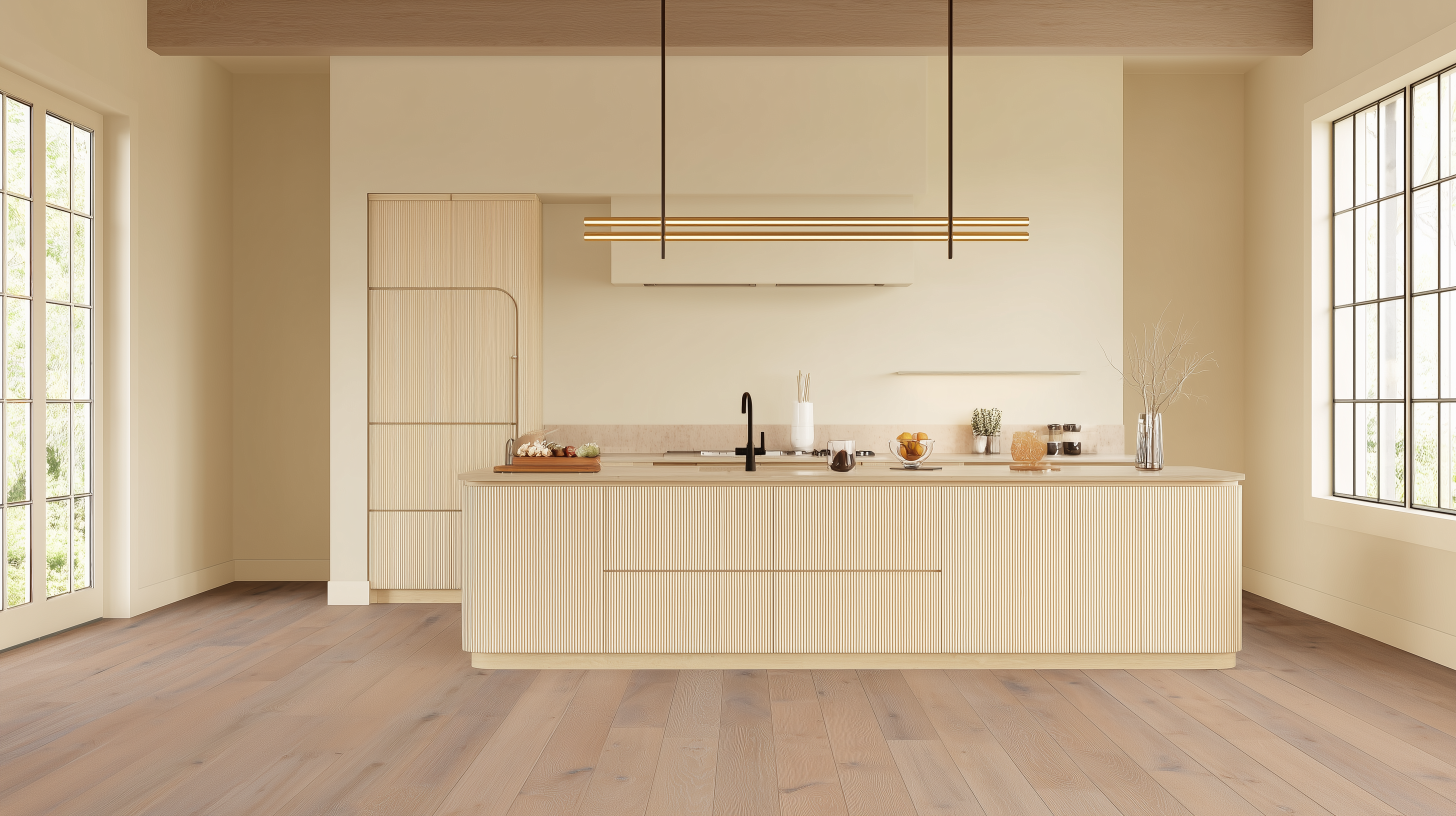A fireplace is almost a sacred place in the homes that have them. It is where people gather on cold nights, and it remains a focal point no matter the season.
Actress Julia Roberts once said, “I think people who come into my home feel comfortable and welcome, and loved. And the biggest thing in my living room, the fireplace, is in and of itself an expression of love.”
That sentiment captures why this architectural feature deserves careful attention. Where hardwood flooring meets the hearth, the transition should be crafted not only for safety but also to preserve the beauty and warmth of the room.
Can Hardwood Meet the Hearth?
Any wood flooring close to a fireplace has the potential to get burned from sparks and embers. Typically, wood-burning fireplaces have more potential to have sparks than a gas-log fireplace. To minimize the hazard, always use a metal screen to prevent popping embers from flying out and landing on the hardwood floor. We will get into more safety tips in a moment.

The primary protection for hardwood floors from fire damage is distance, and that’s the purpose of a hearth extension. It’s the flat area that extends out from the front of the fireplace and meets the hardwood flooring. It’s always a non-combustible material such as concrete, tile, or stone.
What About Gas Fireplaces?
Building codes consider a vented gas fireplace as an appliance, not a real fireplace. You can install hardwood flooring right up to the base. However, follow the manufacturer’s installation requirements.
This building inspection article, “Fireplace hearth extension rules,” shows proper and improper hearth extensions.
Understanding the Hearth
Just to be clear on some definitions, a hearth is the fireplace floor. It’s where you build a fire. The firebox surrounds it with fireproof bricks, and the smoke rises out of the chimney. The tile or stone you see in front of fireplaces is the hearth extension. We use the generic term fireplace to describe the entire unit.
The UBC (Uniform Building Code) states that a hearth extension must extend at least 16 inches in the front and 8 inches beyond each side of the fireplace opening. For oversized fireplaces with openings of 6 sq. ft. or more, the extension must be a minimum of 20 inches in front and 12 inches beyond each side.
Installing Hardwood Around a Fireplace
Easiklip floors are solid ¾-inch white oak hardwood flooring that clips together. There are no screws, glue, or nails required, making it the most effortless solid hardwood floor to install. It floats on top of the subfloor. If you have a fireplace, there are a few ways to install the hardwood flooring around it for a seamless, professional look.
Laying Easiklip hardwood flooring is simple. Layout the boards on the subfloor and fit them together using the aluminum clips provided. When it comes to fitting the hardwood flooring planks around the fireplace, you can use a few techniques. Plan well before you cut anything, especially brick or stone.
Pro Tip: Start laying the hardwood flooring from the fireplace and work outward from there.
Typically, there are four popular methods for installing hardwood flooring around a fireplace. They are undercutting, using a contour, molding, and the picture frame method.
Undercutting for a Flush Finish

If you are retrofitting a new hardwood floor to an existing fireplace, you may need to undercut the brick or stone and slide the hardwood flooring underneath. You don’t want to butt the wood flooring up against the hearth and leave an ugly gap.
If it’s new construction, just communicate the hardwood flooring thickness to the fireplace builder, so they can leave a gap large enough for the flooring to slide underneath. Before you start, gather these tools:
- Undercut or door jamb saw
- Diamond tip blade
- A shop vacuum cleaner
- Gloves, eye protection, and a dust mask
- Hammer and chisel
- Circular or table saw
You may also need a jigsaw or a miter saw, depending on the type of hardwood flooring installation method.
Hardwood Flooring Around a Stone Fireplace
Undercutting the stone is more effort, but it will give you a seamless look without caulk or molding.
Rent an undercut saw and purchase a diamond-tipped masonry blade. Hardwood flooring installers use an undercut saw to cut the bottom of door jambs to install hardwood floors. It’s the same procedure except you are cutting stone.
Set the height of the blade to match the planks and start cutting. You should wear a mask and have someone hold a shop vacuum hose close to the blade to mitigate the stone dust. When finished, sweep out any chips, and the boards should slide right in.
To see a demonstration of how to undercut a stone fireplace for hardwood flooring, watch this video.
Hardwood Flooring Around a Brick Fireplace
Undercutting a brick hearth is the same technique as cutting stone above. Here is a video, “undercut brick for wood flooring,” demonstrating the undercut saw and shop vac combination. He uses a chisel to break out the remaining brick then tests the cut all along the entire perimeter using a scrap piece of hardwood flooring to check that it fits.
Use a Contour Guide
Much easier than undercutting stone, the contour method leaves a gap that you must fill with caulk. This video demonstrates the technique. If you are not a perfectionist and don’t mind a caulk line around the stone, it’s a less messy and easier way to solve the problem.
Place a new wood floorboard next to the stone, then press the contour guide into the rock and trace the outline onto the plank. Work your way down until you have scribed one board. Cut and fit the board. Repeat this process until you have cut all the hardwood floorboards to fit around the hearth.
Alternatively, you can use a compass to trace the contour of the stones onto the plank. Use either a jigsaw or bandsaw to cut along the scribe mark. Install the boards, then fill the gap with flexible sanded grout or caulk. Try to match the filler to the color of the grout or stone.
Hardwood Floorboards typically expand and contract width-wise rather than lengthwise. At Easiklip, we recommend orienting the hardwood flooring so the butt ends of the boards touch the hearth rather than the long edge. It also simplifies the scribing method.
Using Molding
Molding is the easiest solution to hide the expansion gaps, adopted mainly by inexperienced installers, but it’s not a professional look. It should be the last choice for finishing a hardwood floor in front of a fireplace. Use 1/4-round shoe molding and glue or staple it into place.
The Picture Frame Method

If the fireplace has a hearth extension or rectangular slab at floor level, the framing method will look great. It creates a clean, finished look. Depending on the type of hearth material, you may need to use either the undercutting or contour methods described above to make a seamless transition.
Build a picture frame around the hearth using two widths of hardwood floorboards in front and along the sides. Measure and miter tight 90° corners. You must saw off the tongue on the left side of the frame. You can glue and face nail the frame to the subfloor, then run the rest of the floor up against it.
This video shows the steps of installing hardwood flooring around a stone fireplace. Unfortunately, the man in the video didn’t take our advice of starting at the fireplace and working outwards. As you’ll see, he needed a second cut.
Protecting Hardwood Near Fireplaces
Now that you’ve installed beautiful hardwood flooring around a fireplace, here are some easy tips to prevent sparks or heat from damaging the hardwood floor.
Install a Hearth Extension
If for some reason, the existing fireplace does not have a hearth extension, you can purchase or build one relatively quickly. It must be a minimum of 2 inches thick and made from non-combustible material like concrete. Most building codes require a hearth extension as a buffer between the fireplace and the combustible hardwood floor.
Fireplace Grate or Cover
There are limitless varieties of fireplace covers, from glass doors to wire mesh curtains. Always have them in place whenever you are not tending to the fire.
Burn Only Wood, Avoid Pine
Sometimes people like to burn up loads of paper like Christmas wrapping. Prolonged paper burning can make the fireplace or woodstove too hot and can damage nearby hardwood flooring.
Also, avoid burning softwoods like pine. It tends to pop and throw sparks a long way.
Don’t Build Big Fires
Fireplaces and wood stoves can withstand heat, but building roaring fires for long periods can weaken the structure, and the excess heat can damage the hardwood floors. Burn only what you need to add warmth or ambiance to your home.
Buy a Hearth Pad or Fireplace Rug
A fire-resistant hearth pad or fireplace rug protects the wood flooring directly in front of the hearth from burning embers. Never use an ordinary carpet because an ember can ignite it, and you’ll immediately have a dangerous problem on your hands. Be sure the rug is flame resistant.
Follow these precautions, and your hardwood flooring in front of a fireplace will stay safe and burn mark-free.
When Hearth and Hardwood Work Together
A fireplace commands attention—and so does the floor that surrounds it. Where they meet, design must balance elegance with practicality. Undercutting stone or brick offers the cleanest integration, while a picture-frame border can highlight the hearth as an architectural centerpiece. For those seeking a simpler solution, molding provides coverage, though it lacks the refinement of more permanent techniques.
Ultimately, the goal is harmony. When installed with care and protected with thoughtful measures, hardwood flooring enhances the fireplace rather than competing with it. The result is a space where warmth, materiality, and craftsmanship come together in a seamless composition.
Bring Natural Elegance Home
Easiklip’s solid oak floating floors are crafted for both beauty and practicality. With prefinished planks and a patented clip system, installation around fireplaces is simple, seamless, and designed to last.
Order your free sample today: https://easiklip.ca/pages/order-samples
Explore pricing here: https://easiklip.ca/pages/pricing
